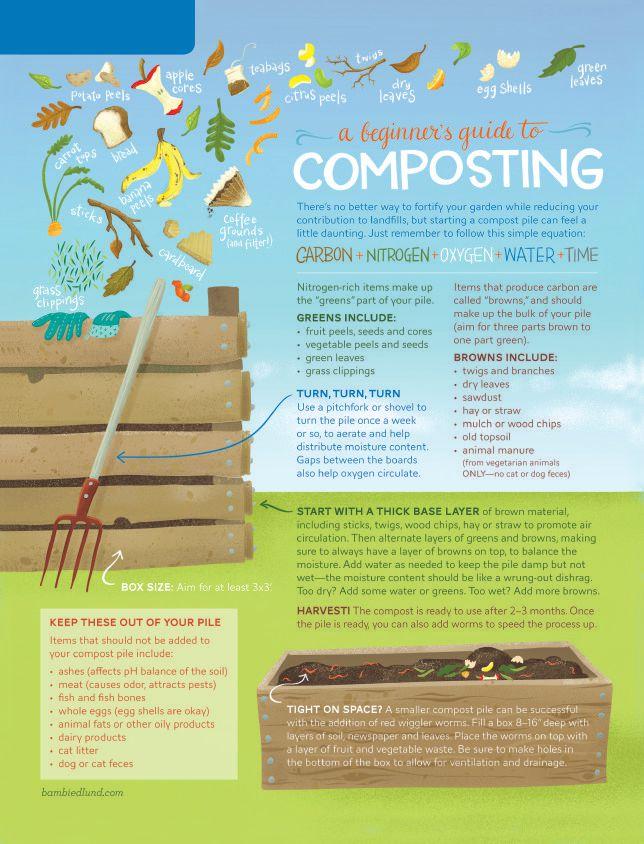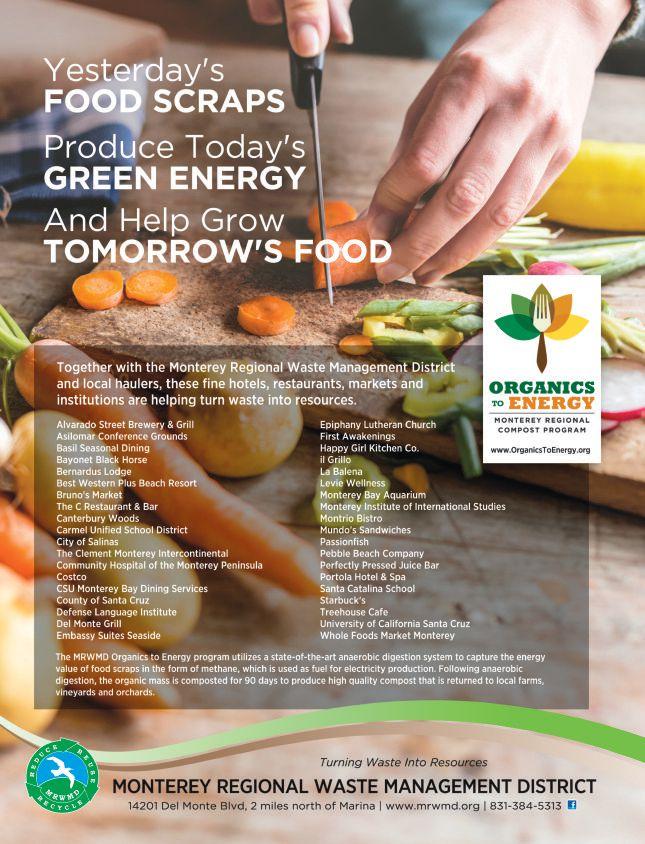




















PUBLISHER AND EDITOR Sarah Wood
Sarah@ediblemontereybay.com 831.298.7117 or 831.238.1217
CO–PUBLISHER AND ASSOCIATE EDITOR Rob Fisher
DEPUTY AND DIGITAL EDITOR Deborah Luhrman
COPY EDITOR Doresa Banning
LAYOUT DESIGN Melissa Petersen
EDITORIAL ASSISTANT Rosie Parker
SOCIAL MEDIA Katie Reeves
Ah, paper. No beeps, no rings, no vibrating.
Instead of screaming for your attention like the news feed on your smartphone, we’ve planned this issue as we do every edition of Edible Monterey Bay—with the intent to gently invite you in and make reading to the very last page irresistible. The idea is simply to apply great storytelling and photography to compelling topics and to deliver beautiful and informative ads from companies worthy of your business.
In this issue, we’re especially pleased to put one of our most prolific and talented contributors on the other side of the lens. John Cox, the executive chef at Post Ranch Inn’s Sierra Mar restaurant, has been with us since the very beginning, when he provided the stunning cover photograph of the craggy backside of an abalone shell to go with his culinary and natural history of the locally famed mollusk.
For Deborah Luhrman’s profile of Cox in this issue (pg. 42), you’ll see we’ve flipped the abalone shell over and, in a cover shot by Kodiak Greenwood, show a striking dish that is helping bring notice to the singular Big Sur cuisine that Cox serves at Sierra Mar.
We hope the story inspires you to dig into our digital archives or past hard copies of EMB to read Cox’s own articles and essays on our local food scene. Some of our personal favorites aside from the abalone piece (Fall 2011) are his stories on the food ways of Big Sur’s Esselen people (Fall 2014), cooking jellyfish (Summer 2014), his up-close and personal experience of learning where his pork comes from (Fall 2012) and his fine-dining chef’s guide to holding a local and organic dinner party on a budget of $5 per guest (Summer 2013).
As we write this letter, much-needed rains are in the forecast, so Kathryn McKenzie’s profile of the unusual and storied Salinas River and those working to protect life along it (pg. 34) is particularly timely as well as a fascinating story in itself.
Finally, we’re delighted to congratulate the Monterey Bay Certified Farmers’ Markets on the occasion of the organization’s 40th anniversary (p. 29) and all of our 2016 Local Heroes on being voted the best in their categories in an online poll of our readers (coverage begins on p. 9). You’ll see a lot of new faces among this year’s heroes, as well as some repeat winners—and all are thoroughly deserving.
So curl up with this magazine and enjoy. And then please take it on your local explorations as a guide to the great things to see and do in our area. And when you do, please tell the proprietors of the businesses you discover or are reminded of through this magazine that we sent you. But if you’re out and about and find you’ve left the magazine at home, you can, if you must, always pull it up on your smartphone.
Best wishes for a happy and healthy spring,
Wood and Rob Fisher PublishersAD DESIGN Bernard Fernandez
Bigfish Smallpond Design • David Ball
Jane Bolling Design • Marilet Pretorius
Melissa Thoeny Designs
CONTRIBUTORS
Angela Aurelio • Jordan Champagne
Jamie Collins • Dina Clark • David Dennis
Bambi Edlund • Zoe Fisher • Philip Geiger
Margaux Gibbons • Kodiak Greenwood
Ted Holladay • Michelle Magdalena
Camilla M. Mann • Kathryn McKenzie
Katie Pofahl • Andrea Riordan
Patrick Tregenza • Amber Turpin
Patrice Vecchione • Patrice Ward Lisa Crawford Watson
ADVERTISING SALES

ads@ediblemontereybay.com Main number: 831.298.7117 Shelby Lambert 831.238.7101 Kate Robbins 831.588.4577
Ola Rocha 802.734.7635 Sarah Wood 831.238.1217

DISTRIBUTION Mick Freeman
CONTACT US: Edible Monterey Bay P.O. Box 228, Carmel Valley, CA 93924 www.ediblemontereybay.com 831.298.7117 or 831.238.1217 info@ediblemontereybay.com
Edible Monterey Bay is published quarterly. All rights reserved. No part of this publication may be used without written permission of the publisher. Subscriptions are $28 per year at www.ediblemontereybay.com. Every effort is made to avoid errors, misspellings and omissions. If, however, an error comes to your attention, please accept our apologies and notify us. We also welcome letters to the above address. Thank you.




Farmer Tom Broz and his wife, Constance, founded Live Earth Farm in 1995 on the belief that a farm is only as valuable as the community that surrounds it.
“The strength of the farm,” Broz says, “still for me today, is grounded in that relationship.”
It’s most certainly this desire to connect with and educate his community that has earned Broz a second win for Best Farmer through Edible Monterey Bay’s reader-selected Local Hero awards.
On a recent sunny day, throngs of children tromped through muddy fields, harvesting lemons to take into the kitchen and make lemonade. Herded by a fluffy white sheepdog, the group’s excited voices could be heard through the hills of the Green Valley of Watsonville where the farm grows 70 acres of organic fruits and vegetables.

These voices speak to the vibrancy of Live Earth, a farm that has grown over its 21-year history from a CSA of 15 local participants to today’s 600 members. Over the last decade, it has worked to further diversify its model to include farmers’ markets, direct-to-retail and its educational nonprofit Discovery Program that hosts about 1,000 kids each year.
For Broz and his crew, education is vital to Live Earth.
“I think where our story is unique is that we have a for-profit production farm and a nonprofit educational program. In as many ways as possible, we’re trying to create an environment where the farm is not just a food producing business but, also, a resource for the community to foster a connection with the land and the food that is being grown.”
Broz’s mission of cultivating a strong relationship with his community extends to the natural world and his desire to properly integrate his cultivated land with the native landscape. Partnering with the Wild Farm Alliance and Community Alliance with Family Farmers, Broz has installed native hedgerows all over the property. Visitors to the farm can collect a map and take themselves on a self-guided tour that illustrates the ways that Broz has worked to improve the wildlife habitat and protect natural resources.
“My passion has always been around growing food,” Broz explains. “But what kept us going as a farm is the personal relationships that come from growing that food—from my own immediate family to the larger community of people as well as the natural environment.”
Besides the Discovery Program, Live Earth opens to the public for Community Farm Days, u-pick events, farm dinners and workshops.
“If the community continues to wish to connect,” Broz believes, “I see the future of farm and food to be very positive.”
Rosie Parker is a Santa Cruz-based writer, farmer and beer lover. A native New Englander, she misses snow days but is happy she can now grow lettuce in the winter.
Live Earth Farm 172 Litchfield Lane, Watsonville 831.763.2448 • www.liveearthfarm.net
talent and really good ingredients are the recipe here
His friendships with “the fish people and the mushroom people” now traverse the Monterey Bay area, from Big Sur to Santa Cruz. And he shares those connections with the many chefs who have worked at Bernardus and moved on to head their own kitchens. “It’s more worthwhile for someone to sell 10 boxes to five different restaurants than just two boxes to me. We all benefit.”
About farmers, he speaks of balance—“they need to be organic, certainly, but they need to be large enough to be consistent.” (Hollister’s Swank Farms is a favorite.)
Stamenov also sources from on-site herb and vegetable gardens and his own home orchard of more than 200 trees, many of which he obtained from the California Rare Fruit Growers association, to which he belongs.
“I’m a fruit tree hoarder,” he jokes. “I have eight kinds of apricots, from red to white. And it’s just about time to do some grafting.”
In the kitchen, Stamenov pours olive oil over a venison medallion, pointing to the label. “This comes from about six miles down the valley. I’ll give you his card when we’re done.”
When we are finishing, he ducks into his office for that card. It strikes me: his authentic generosity sets him apart.
Stamenov himself offers it succinctly.
“I believe in being generous—with my time, with the community, and with ingredients.”
Regarding recent changes at Bernardus—the fine-dining mecca Marinus and the more informal Wickets restaurants were merged and transformed into the new Lucia as part of a major updating and renovation of the entire Bernardus property last year—he speaks of casualizing the restaurant and cooking more rustically.
Shadowing chef Cal Stamenov in his kitchen at Lucia Restaurant & Bar at Bernardus Lodge & Spa, I am scribbling notes, photographing and trying to stay out of his way. Watching Stamenov, winner of the 2016 Local Hero award for Best Chef/Restaurant, prepare a variety of dishes, I ponder: What defines a hero? Actions? Values? A willingness to do something different?
Settling into the dining room, I ask, “You’ve been hailed as a local hero by your peers and community. What is it about you that’s heroic?”
He chuckles affably. “I’ll ask my wife and get back to you.”
But when the conversation turns to how he’s impacted the local food scene since arriving here after working in some of the world’s finest restaurants, such as New York’s Four Seasons, and with some of its most renowned chefs, including Alain Ducasse, he answers without hesitation.
“When I arrived here 20 years ago, food was commercial—with lots of frozen food. There was no such thing as ‘farm to table.’”
Management at Bernardus was lenient, however, and afforded him the latitude to make “backdoor deals.” Instead of the usual purveyors, he nurtured relationships with local farmers, fishermen and foragers.
“When you cook with good, solid, organic food, you don’t need much more than salt, pepper, garlic and herbs,” he declares. He likes thyme, parsley and tarragon. “But it’s important to be extravagant with the ingredients,” he adds, scattering fresh truffle slices over salad greens.
Conceptually, his food designs are simple. His creative dishes contain elements that you can easily count—venison, olive oil, garlic, candy caps, carrots, celery root, huckleberries, foie gras and chervil, for instance. The preparation is uncomplicated.
But the flavors and textures are masterfully layered, the combinations nuanced and elegant. Stamenov’s a pure artist. Generous mentor. Hero.
Runners up: 2nd place, Brad Briske of La Balena and Il Grillo in Carmel and 3rd place, Jesse Santillan of The Tap Room in Pebble Beach
Camilla M. Mann is a food writer, photographer, adventurer and passionate cook. She blogs at culinary-adventures-with-cam.blogspot.com/ and lives in Seaside.
415 W. Carmel Valley Road, Carmel Valley 831.658.3595 • www.bernarduslodge.com
READ: To read more about Cal Stamenov, go to wwww.ediblemontereybay.com to look up Deborah Luhrman’s extended profile of him, “Local Treasure.”


berly Hallinan, who has been supervising the Northern California stores since Scott Roseman and Rex Stewart retired just over a year ago.
Loyal New Leaf fans still feel it’s a community market because of its emphasis on high quality local produce and vendors, and the strict vetting of any food before it is allowed on the store’s shelves. The grocer was also the first in California to be named a Certified B Corporation—meaning it upholds stringent social and environmental standards.
“There are really no other stores that have our product standards, not Whole Foods, not Sprouts. That’s what really sets us apart,” she claims. “I think our customers really appreciate that we’ve read the labels and that there are ingredients and products we won’t sell.”
By Deborah Luhrman Photography by Angela AurelioWhen Scott Roseman launched New Leaf 30 years ago, he brought in Hallinan as the financial manager and as the buyer of dairy products, bread and frozen foods. There were about 25 employees at the beginning, and she recalls, “It was funky. The building was funky. It was very raw and rough around the edges. Every day we were reinventing the wheel.”
Today New Leaf employs 650 people in California with five markets in Santa Cruz County, one in Half Moon Bay, one in Pleasanton and one in San Jose—which is branded as a New Seasons Market.
For Hallinan, the past year has been a challenge. “It’s been daunting in a way because Scott Roseman, Rex Stewart and I were what I like to think of as a three-legged stool.
“We are all very opinionated, intelligent, articulate people so it wasn’t always smooth sailing, but our ability to lead as part of a threelegged stool was part of our success,” she says.
The past year has included a major remodel of the kitchen and meat department at New Leaf’s Capitola store, and Hallinan began bringing in some of New Seasons’ renowned customer service ideas and practices. In other ways, not much has changed. For example, an idea to save money by switching from chef’s coats to New Seasons-style aprons in the deli department was rejected because New Leaf management believes that simple details like that project their brand.
This year promises to be one of consolidation to get ready for a giant growth spurt projected for New Leaf in 2017, when the company plans to open new markets in Aptos, Emeryville and Sunnyvale. It is still looking for a suitable location for a long-awaited New Leaf in the Monterey/Carmel area.
“It’s one thing to open a new store every year and a half or two, and it’s another thing when you are opening more than one a year,” she says.
For now, management is looking at how to add lots of new employees while maintaining the New Leaf culture and how to become a true “community market” in new places that are not so familiar with the 30year-old Santa Cruz tradition.
Runners up: 2nd place, Star Market and 3rd place, Staff of Life
Edible Monterey Bay readers have voted New Leaf Community Markets their 2016 Best Food Purveyor. It’s the fourth time that New Leaf has won EMB’s Local Hero award over the last five years, but this time is especially significant for New Leaf, since shoppers have now had time to evaluate the sale of the beloved Santa Cruz-born natural food chain to Portland’s New Seasons Market in late 2013.
“It’s very important that our customers feel we are still providing them with the food that they’re accustomed to,” says co-founder Kim-
Deborah Luhrman is deputy editor of Edible Monterey Bay and editor of the EMB weekly newsletter. A lifelong journalist, she has reported from around the globe, but now prefers covering our flourishing local food scene and growing her own vegetables in the Santa Cruz Mountains.
New Leaf Community Markets www.newleaf.com

“Customers really appreciate that we’ve read the labels.”




son and The Bench have earned this year’s Edible Monterey Bay Local Hero award for Best Beverage Artisan.
The Bench, a little over three years old, is the newest addition to Pebble Beach Resorts—a place strongly founded on tradition.
For the opening team, this was an opportunity to exchange legacy cocktails for a seasonally inspired drinks menu. With top-notch liqueurs and organic, locally sourced produce for housemade syrups and juices, Nielson notes that her approach is to “look for fresh twists with what’s on trend.”
This is exemplified in the brand new Porthole Program—house-infused liquor served from an actual porthole. An infusion flavoring The Bench’s cocktails as this issue of Edible Monterey Bay went to press, Fire in the Hole, is The Bench’s take on the popular Fireball Whisky. Buffalo Trace Bourbon mixes with chile de arbol, toasted cinnamon sticks, star anise, ginger, cloves, orange peel and spiced winter syrup. The result is warming and smooth, a perfect balance of spicy and sweet.
The cocktail menu is carefully crafted through collective idea sharing and a seasonal tasting panel.
“How can you take a classic cocktail and add a nuance?” Nielson asks. “How can you remodel the core structure of it with something new?”
As a former buyer for the Lalla Group, Nielson knows how to find the best products on the market. The signature PB Manhattan, made with cask-strength Knob Creek, is given depth by using both Dolin, a lighter French vermouth, and Averna, an Italian liqueur that carries notes of citrus and chocolate.
Living on a third generation dairy farm, Nielson truly leads a farmto-table existence.
“I get to go out into my garden and pick blackberries and make gin mojitos,” she says, beaming. “Inspiration is everywhere for me!”
Nielson finds much of her inspiration through the people she serves.
“I feel like hospitality picked me,” she says with a smile. The Bench brings in everyone from bucket-list Pebble Beach guests to a loyal, local following.
“Our guests are excited to be here!” Nielson exclaims. “That’s a great starting place for an experience-oriented bartender.”
Nielson’s bountiful energy is infectious, and even with the breathtaking views you can’t help but watch as she muddles and mixes.
“As the cocktail craze grows,” she notes, “people are more interested and they want to see how things work.” This interest makes it easier to take a customer from a traditional whiskey sour to The Bench Sour, which uses ginger beer and a blood orange and passion fruit purée.
“We strive for brightness in our cocktails,” Nielson says, the Pacific shimmering behind her. “We feel it mirrors our excited and eclectic crowd.”
To have Meg Nielson mix you a drink at The Bench at Pebble Beach Resorts is to indulge in luxury.

Every seat in the bright and airy restaurant, from the white marble bar to the patio out front, offers astounding and expansive views of Stillwater Cove and a legendary 18th hole.
Pair the view with a Thai One On, one of the many fresh and balanced cocktails that Nielson helped create, and it’s obvious why Niel-
Runners up: 2nd place, Katie Blandin Shea, Bar Cart and 3rd place, Anthony Vitacca, Montrio Bistro
The Bench
The Lodge at Pebble Beach, 1700 17 Mile Drive, Pebble Beach 866.543.9318 • www.pebblebeach.com/dining



After helping hundreds to find their place in the world, a farmer-training group will finally be able to put down roots itself
By Kathryn McKenzie Photography by David Dennis“Having a permanent site means that we can plan for the long term,” says Ganzhorn, who notes the lease will be for 20 years with three 5-year, renewable terms, potentially a total of 35 years. “It’s incredibly exciting. We’ve been talking about this since before 1998, when the city put it in the Pogonip master plan.
“Our current thinking is that if all goes well, we hope to plant a cover crop in 2016. We’d spend 2017 preparing the site and building the soil, with a hope to plant our first crops for harvest in 2018.”
The nonprofit, which recently celebrated its 25th year, is now on a month-to-month lease on its organic 4-acre farm near Natural Bridges, also the site of its CSA operations, u-pick farm and workshop; its office is in another location. Having the Pogonip property means that the project will for the first time be able to combine all of its operations together on one site.
With more land, HGP will also be able to expand its farm, both in area and in new crops. Ganzhorn says the organization looks forward to planting orchards, a long-term investment that its short-term leases had prevented in the past.
Importantly, the farm expansion also brings the opportunity to take on more program participants. Some 600 homeless people have participated since the project began in 1990. They learned how to grow and harvest crops, developed other marketable skills and received counseling and social services support aimed at helping them find housing and manage other aspects of their lives.
Currently HGP serves about 17 trainees; Ganzhorn hopes to eventually triple this number, although she notes that it will take some time.
“We’re looking at how to do this while still maintaining the quality of the program,” Ganzhorn says.
The Homeless Garden Project has always been about healing people’s spirits by reconnecting them with the land. And now, at last, the farming organization which has for the second time been named Best Nonprofit by Edible Monterey Bay’s readers, will have its chance to settle onto land of its own.

In December, the Santa Cruz City Council approved plans for HGP to take over a 9-acre section of Pogonip, a 640-acre, city-owned greenbelt space with a rich local history. Initially part of Cowell Ranch, the property was the site of a golf club and famous polo grounds in the early 20th century; more recently, its rustic lodge-style clubhouse made a cameo appearance in the 1987 vampire movie, Lost Boys. These days, Pogonip is a popular hiking, mountain biking and horseback riding destination.
The city is now finalizing details of the lease of Pogonip’s Lower Main Meadow, where the Homeless Garden Project plans to build a small administrative office, a barn and a greenhouse by the end of 2017, says Darrie Ganzhorn, the group’s executive director. HGP is currently planning a community-wide capital campaign for improvements to the Pogonip property.
Other plans call for increased volunteer opportunities, more donations of produce from the farm to nonprofits that feed the hungry and new events like a health fair to promote eating fresh fruits and vegetables.
Ganzhorn says that she envisions the Homeless Garden Project’s new home as a resource not just for the Monterey Bay area, but also for anyone who wants to be part of it.
“I want it to be a gem for the city of Santa Cruz, and a landmark that people from out of town will want to visit,” she says.
Runners up: 2nd place, Live Earth Farm’s Discovery Program and 3rd place, MEarth
Kathryn McKenzie, who grew up in Santa Cruz and now lives on a Christmas tree farm in north Monterey County, writes about sustainable living, home design and horticulture.
Homeless Garden Project
Downtown Santa Cruz store: 110 Cooper St., Ste. 100G Farm and farm stand: Shaffer Road at Delaware Avenue 831.426.3609 • www.homelessgardenproject.org





Growing up in Jakarta, Indonesia, a constant observer of her mother and grandmother as they prepared family meals, Simpson understood early on that she, too, would spend her life in the kitchen. She also knew it would not be at home.
“My mother and grandmother were the Martha Stewart of housewives, cooking and baking, teaching their friends how to do it, and always working from scratch to make really good, familiar food,” Simpson says.
But Simpson’s path to Spanish Bay would involve extensive training and travel.
She studied formally with the legendary chef Paul Bocuse at his École des Arts Culinaires et de l’Hôtellerie in Écully, France. She also interned at Hotel Raphael, Paris, and at the Ritz Carlton, Laguna Niguel in California before marrying architect Paul Simpson and moving to Pacific Grove.
In 2000, Simpson joined the kitchen at The Inn at Spanish Bay, which creates all of the desserts for the hotel restaurants, Pèppoli, Roy’s and Sticks, as well as special events like weddings, Concours d’Elegance and Pebble Beach Food & Wine.
At Spanish Bay, Simpson quickly became known for her work ethic and attention to detail. By 2007, she had worked her way up to assistant pastry chef. Four years later, she was named pastry chef.

“For me, a good pastry chef is not just someone who can produce good desserts and make a good showpiece. The person has to be respectful and compassionate with his or her employees, always have good teamwork, and encourage them to be better and more passionate about their job.”
In addition to her beloved signature desserts, Simpson has become known at Spanish Bay for dramatic gingerbread houses, which go on display in the hotel lobby during the winter holidays.
This past year, two little boys kept a close and patient vigil on a gingerbread village, hoping to be present when it was finally dismantled. They were, and Simpson awarded their devotion with the gift of the main house.
“It is always very satisfying when people enjoy and appreciate my work,” says Simpson. “I appreciate my crew, and I appreciate my husband. Without his support, without his care of our three kids and his home cooking, I could not do this job.”
Simpson lifts a warm chocolate chip cookie, crisp on the edges, soft in the center, from the cooling rack, destined for the beverage cart on the golf course, room service or the restaurants.
Sometimes Anastasia Simpson, executive pastry chef for The Inn at Spanish Bay in Pebble Beach, considers removing the molten lava chocolate cake, the mud pie or the key lime pie from her menus. That is, until her patrons let her know they have come to count on her familiar favorites.
“People know what they like, and they like what they can recognize,” says Simpson, who is the 2016 Best Pastry Chef, awarded by Edible Monterey Bay’s readers. “I admire artisan chefs who can bring savory into sweet, who can mix in seaweed or truffles, or blend smoked oak wood with just the right flavor of ice cream to create something appealing. But I am ‘old school.’ I prefer to work with flavors people know and do something really special with them.”
“You can’t go wrong,” she says, “with a good chocolate chip cookie.”
Runners up were: 2nd place, Ben Spungin, CLM/Restaurant 1833 and 3rd place, Parker Lusseau
Lisa Crawford Watson lives with her family on the Monterey Peninsula, where she is a freelance writer and an instructor of writing and journalism at California State University, Monterey Bay and Monterey Peninsula College.
The Inn at Spanish Bay 831.647.7500 • www.pebblebeach.com



Long days spent picking beans on her great-grandparents’ 400-acre farm in Montague, New Jersey was where it all began for the woman voted 2016 Best Food Artisan by Edible Monterey Bay’s readers. That may seem like a long way from Patricia Davis’ current home in the Santa Cruz Mountains, but the Garden State family farm is where her deep passion for food, farming, preserving and cooking was first sparked.
Fast forward through a career as a chemical engineer, launching satellites from Palo Alto up until 2011, and we now find Davis and her husband Bryn atop a hillside in Ben Lomond, where they operate a cooking school, Quail Hollow Kitchens.
Classes are held right on the couple’s 26-acre property, and anyone lucky enough to spend some time there will upon arrival get to know a bevy of poultry, including several ducks, some Black Copper Maran chickens and a turkey—creatures that Davis admits are more of a hobby than a business, but do provide eggs richly hued in greens and deep chocolate browns for her cooking.
Quail Hollow’s class schedule is something of a food map of Davis’ life, and the first thing you will learn about her is that family and heritage are paramount.
Relics of her family tree are all over her house, lining her cookbook shelves and in her kitchen cupboards. Photo albums depict generations together, and the ladies who passed down the food literacy Davis is proud to own.
Davis likes to say, “Food is this communion with family and friends,” which is why her classes are very much designed for the home cook.
Upcoming sessions will focus on Hungarian egg noodles (one of Davis’ specialties), molecular gastronomy (Davis is a self-described geek who is “very gadgety”), pastries and chocolate tempering. She may also add olive oil tasting, and would eventually like to offer classes with guest chef-instructors from around the world.
With so many wonderful class offerings in our community, like down the road at Mountain Feed & Farm Supply, she doesn’t want to “step on any toes” by repeating themes like pickling and cheese making that would otherwise be part of her repertoire.
“I formulate each class based on my skill set,” she explains, and when that skill set happens to involve learning to cook from a great-grandmother who was the chef for the prince of Hungary and a professional background in chemistry, the classes are far from boring or basic.
Instead of standing around just watching, her students will find things to touch, explore, investigate, discuss.
“I like sharing novel things that people haven’t experienced,” she says, referring to the unique tidbits she assembles for each class, like the homemade Egyptian Dukkah spice mix or the hard-to-find olive oil. “Plus they all get to feast!”
Runners up: 2nd place, Friend in Cheeses Jam Co. and 3rd place, tie: Happy Girl Kitchen Co. and The Penny Ice Creamery
Amber Turpin is a freelance food and travel writer living in the Santa Cruz Mountains.

Quail Hollow Kitchens
Ben Lomond • 831.609.6226 • www.quailhollowkitchens.com
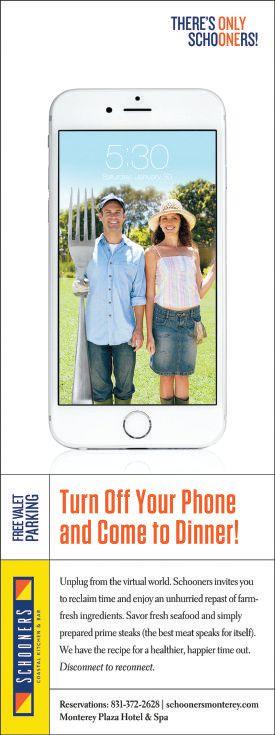


I first learned about fennel—a subtly licorice-flavored, sweet, juicy white bulb with feathery, dill-like fronds and tasty seeds, flowers and pollen—in 1997, during a road trip to the Mexican border with a college

I distinctly remember the farmer who was giving the tour being ultra-exuberant about the health benefits of fennel as he used his knife to cut open bulbs for us to try.
The flavor didn’t knock my socks off that day, and it wasn’t until I overplanted the crop last year that I finally found my appreciation for fennel. Something that tends to happen when a farmer ends up with too much of a certain crop is that they end up eating a
Being creative in the kitchen is my favorite pastime, so when the totes of leftover fennel came back from the markets where my farm
was offering them, I got to work seeing what I could come up with to get through it all.

I discovered that fennel bulbs are awesome cored, trimmed and baked alongside a whole chicken. Adding a little water in the bottom to steam them slightly keeps the bulbs from drying out, as does drizzling olive oil on them. I like to do both.
Broth is amazing when made with fennel, and the vegetable actually holds up even after days of simmering. Cooking fennel mellows the licorice taste, and the texture becomes similar to a whole cooked onion, soft with layers of delicate, savory yet unique flavor.
Some other preparations I’ve tried and loved include fennel pickled; marinated in teriyaki; skewered and barbecued; chopped and sautéed with onions and served over fish; chopped into chunks and cooked with buttery risotto; and shaved raw on top of an arugula and Parmesan salad with a champagne vinaigrette.
My favorite way to enjoy fresh fennel is sliced thinly with cabbage and made into a coleslaw with fresh mango slices, Meyer lemon juice, mayonnaise, salt and pepper. But
whether braised, stewed, grilled, sautéed or served raw in salads or on a crudité platter, this versatile and healthy vegetable deserves to become much more of a staple in your cooking repertoire.

Fennel belongs to the Umbelliferae family and is a close botanic relative of parsley, carrots, celery, dill and cilantro.
It was first cultivated in the 17th century, in Italy, where it is called finocchio. In 1824, the seeds were sent from an American consul in Florence, Italy, to Thomas Jefferson. But it wasn’t until the last few decades that fennel has become somewhat popular and widely available in the U.S. Still, the U.S. doesn’t even make the list of the top dozen countries that cultivate the crop.

In many countries, fennel is a favorite, such as in Spain, where the stems are used in a pickled eggplant dish called berenjenas de almagro.

A popular salad in Israel is simply fennel sliced with parsley, lemon juice, olive oil, sumac, salt and pepper.
Juicing fennel is a great way to get your daily dose of vitamin C and boost the immune system while adding a refreshing taste to any juice base.
The anethole oil in fennel is known to reduce inflammation and have antifungal and antibacterial properties and may help prevent cancer. Wild fennel has been long used medicinally to treat stomach complaints as it is an antispasmotic and digestive.
The fennel bulb itself is a fabulous source of fiber, folic acid and potassium and has significant trace minerals such as copper, iron, calcium, magnesium, manganese, zinc and selenium. Of course, soil quality matters when it comes to the micronutrient uptake of the plant. Fennel needs to be grown in healthy, replenished soil containing abundant amounts of those minerals in the first place— yet another good reason to buy from farmers who follow good organic practices of rebuilding soil through cover cropping and crop rotation.
Fennel is also one of the three main components of absinthe, a high-alcohol spirit
which was created initially as a medical elixir in 18th century Switzerland. The high potency of the spirit eventually led to international bans on its production and consumption, but in recent decades it has become a popular cocktail ingredient.

While most fennel recipes will call for fennel bulbs, the plant offers much more to cook with.
There are flowers and pollen that can be harvested from wild fennel (usually referred to as anise and although in the same family, considered a different plant) and seeds, too.
Wild anise grows abundantly in North America alongside roads and in open fields from the coast to inland, and as long as you can be sure that the wild fennel is not contaminated by herbicide sprays, you can collect the pollen and seeds yourself.
There is a sweet spot of time when the pollen is loose and can be harvested. Too early and the flowers will still be closed, too late and you will be harvesting the seeds.
Simply bend the flowering anise into a brown bag and shake it gently.
Once the anise has pollinated and the flower dies, it will set seed and you can then collect the seed heads to dry and use for various dishes.
Seeds can be smashed to release the compounds and used for tea to help calm an upset stomach and help digestion. The seeds can also be chewed whole to naturally freshen the breath.
Fennel seeds are used to season Italian sausages and in Indian and Middle Eastern cooking.
When using the seeds in savory dishes, the aromatics are best released by toasting the seeds in a pan on medium until brown. When using in sweet dishes like breads and cookies, it is best to use raw, as heating changes them from sweet to spicy.
Both fennel seeds and pollen are commonly used in chutneys, meat dishes and breads. Look for green fennel seeds when buying because that means they are fresh since they tend to lose color as they age. Purchasing pollen costs about $15 per ounce, so that is some motivation for foraging your own.
Fennel needs adequate water to produce bulbs with good flavor—a consideration if our fouryear drought returns after this winter’s rains. But the benefit of growing your own fennel means being able to reap all parts of the fennel plant, fresh from your own back yard.
The three main seed varieties grown locally are Victorio, for planting into the spring, Zefa Fino, a tried and true old variety for planting in the spring or summer, and Orion, for planting in the fall.
It is best to plant fennel in the ground from transplants as the weeds can quickly overtake directly sown fennel seeds. Space plants 6 inches apart in rich soil with a slightly alkaline pH range of 6.5–7.5. Harvest 50 days for baby and 80 for full-size bulbs.
Letting the fennel go to flower will offer food to pollinators and other beneficial insects, as well as provide flowers, pollen and seeds for culinary projects in the kitchen.
It is my hope as a fennel-growing farmer that you are inspired to try this amazing vegetable that other countries have been enjoying for many years. Or next time I end up with excess fennel, I will attempt to turn it into absinthe, which I am sure would sell better than the raw vegetable.
Jamie Collins is owner of Serendipity Farms and has been growing organic row crops at the mouth of Carmel Valley since 2001. She distributes her produce through a CSA, u-picks and farmers’ markets.
RECIPES: See p. 26 for LionFish SupperClub chef Zachary Mazi’s recipes for Braised Pork Belly and Sweet Potato Gratin with Fennel and see www.ediblemontereybay.com/ recipes for Quick Pickled Fennel.

2 teaspoons nutmeg 1 teaspoon allspice 5 teaspoons salt, or to taste 1 teaspoon pepper
2 pounds sweet potatoes, orange, sliced into thin rounds 6 ounces Parmesan cheese, grated 2 cups heavy cream 6 slices bacon, cooked and broken into pieces
Preheat oven to 400° F. Combine salt, pepper, nutmeg and allspice. In an 8 by 8-inch casserole dish lined with parchment paper, arrange sliced sweet potato in layers, followed by salt and spices, and then grated Parmesan and some bacon. Repeat layers using even amounts of ingredients until they are all used. Pour heavy cream over layers and top with Parmesan. Cover and bake until a chopstick easily pierces gratin, about 1 hour.
Cover baked gratin with parchment paper. Place similar casserole dish on top with heavy weight (cans of tomatoes, etc.) and press overnight in refrigerator. (It is OK if some of the liquid squeezes out of the sides; you may want to place the whole project on a cookie sheet to catch the drips.)
The following day, flip casserole dish and remove the cold, pressed gratin. Slice off rough edges to make 8 squares. (And enjoy the scraps while you plate your meal.)

with lid or foil. Place in a preheated 300° F oven and cook for 2 to 3 hours.
When fork or knife pierces pork with ease, remove pork belly and chop fennel and leeks roughly. In a saucepan on the stove, reduce braising liquid to half its volume.

To serve, reheat gratin pieces in 300° F oven until hot and browning on top. In center of each plate, lay some braised fennel and leeks. Arrange one piece each of hot gratin and braised pork belly on top of fennel and leeks. (See photo.)
2 pounds pork belly, skin off, cut into 8 pieces
2 tablespoons salt
1 tablespoon candy cap mushroom powder* 2 teaspoons black pepper
1 fennel bulb, cored and julienned (greens reserved)
2 leeks
4 tablespoons maple syrup 4 tablespoons bourbon 1 orange, juiced ½ cup water
1 tablespoon Worcestershire sauce
Garnish
2 tablespoons fennel flowers** Greens from 1 fennel bulb
Combine candy cap mushroom powder with salt and pepper and rub into pork on all sides. Allow pork to sit for 2 to 4 hours with salt rub.
Meanwhile, combine maple syrup, orange juice, bourbon, water and Worcestershire sauce and set aside. Core and julienne fennel bulb and halve leeks, white part only. Arrange leeks on the bottom of a deep oven pan with heavy lid (or one with a lip so foil will hold in steam), and cover with julienned fennel.
Pat pork belly dry, and sear on very high heat to get a rich, bronzed brown on all sides. Then lay pork belly on top of the vegetables, pour liquid over the top and cover tightly
Garnish the top of the belly and gratin with fennel greens and fennel flowers. Drizzle some of the reduced poaching liquid around the plate, or get fancy and make dots, or whatever makes your eyes happy. Now make your mouth happy and eat!
*Dried candy cap mushrooms may be purchased from local specialty food stores such as Stone Creek Kitchen in Monterey or from chef Mazi in Santa Cruz (chefzack@lionfishsc.com) and pulverized in a spice grinder or a coffee grinder.
**If you don’t have fennel growing in your garden, look for fennel flowers at the farmers’ market. Or substitute fennel pollen, available at specialty food stores.
LionFish SupperClub • www.lionfishsc.com





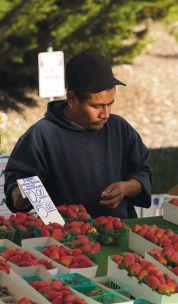
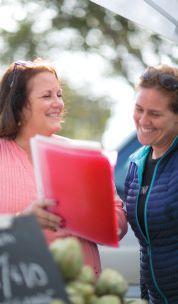
Spring is when our local farmers’ markets come alive. Strawberries and asparagus are in full swing, and stone fruits are not far behind.
“I love April and May because that’s when all the stone fruits start to come in. Cherries, pluots, peaches and Santa Rosa plums—my favorite!” says Catherine Barr, executive director of the Monterey Bay Certified Farmers’ Markets.
This spring is especially sweet as Barr prepares to celebrate the 40th anniversary of the MBCFM group, which includes year-round markets at Cabrillo College in Aptos and at Monterey Peninsula College, as well as seasonal markets at the Del Monte Center in Monterey and The Barnyard Shopping Village in Carmel. (See p. 31 for days and times of operation.)
To celebrate its Ruby Anniversary, the Aptos and MPC markets will feature a new series of food preservation workshops starting in May with Todd and Jordan Champagne of Happy Girl Kitchen Co. Popular cooking demos with chef Anne Baldzikowski will be returning, and a beautiful 40th anniversary poster by artist Diane Devine will be on sale to commemorate the milestone.
A public anniversary party is planned for October, and at the end of the year, a big dinner will be held especially for all of the farmers and farm employees who have been part of the organization’s markets over the years.
Founded in 1976 at Live Oak Elementary School in Santa Cruz, MBCFM is the oldest farmers’ market organization on the Central Coast and much loved by its loyal customers, who frequently vote it to

the top of polls by American Farmland Trust. The organization’s enewsletter and website, managed by marketing director Annaliese Keller, have also become much appreciated by market-goers.
“When I started, it was more like the hippy farmers’ market, with raggedy looking guys bringing food to the market,” recalls Barr, who has been managing the markets since 1993. Nowadays, Aptos market’s 80 vendors welcome up to 5,000 shoppers on a summer Saturday, while the Friday market at MPC sees as many as 2,500.
“The consumer has gotten a lot savvier in terms of food, and they want to connect with the person who is growing that food,” she says.
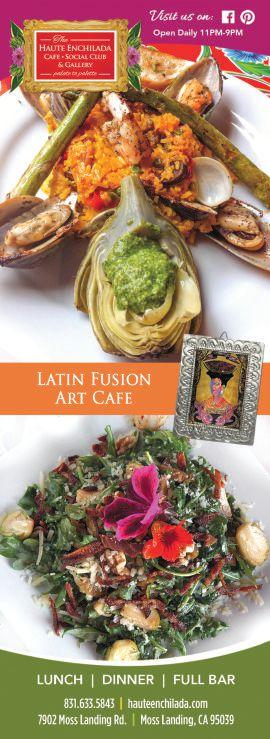
And that’s why the nonprofit MBCFM is run almost like a coop, with a board of directors made up of farmers who set the direction.
“We’re here to put the farmers back in farmers’ markets,” says Barr. “Some markets are more like food fairs. The first thing you see is prepared food items, so you’ll get a piece of chicken or a baked potato.”
“We only allow 15% non-farmers because we want to highlight the fresh fruits and vegetables. We want people to take their produce home and cook for themselves,” she explains.
Two-thirds of vendors come from Santa Cruz, Monterey and San Benito Counties, with out-of-area farmers mixed in to provide a diversity of products and extend the season.
Chef Mark Denham of Soif Restaurant in Santa Cruz, who was buying romesco and looking for cheddar cauliflower at a recent Aptos market, says visiting with farmers is what he likes best.
“There are people here who we don’t see at any other place, like Marguerite from Belle Farms and Tom from Coke Farms.”
“We operate differently than other markets,” says board president Fred Minazzoli, an almond rancher from the Stockton area. “We try to keep a diversity of products and don’t want to let in everybody and his brother.”
Indeed, more than 200 farmers and food purveyors are on the waiting list for the lucrative Aptos market, but space is limited and only a handful of spots opens each year. Slots are so valuable that they are handed down as new generations take over the family farms or are included as part of the deal when a farm is sold.
The approach has created a community feel and resulted in supportive long-term relationships.
“We have a lot of farmers who have been with us for the past 30 years, so we’re really a family, and we help each other out,” says Barr. “The best compliment I can get is when a farmer says, ‘I love coming to your market and seeing my farmer friends.’”
For Windmill Farm owner Ronald Donkervoort, it’s all about the shoppers.
“What I really like about the Cabrillo market is that the customers are a little older and really know what it takes to grow food. We get appreciated for what we do and as a farmer you really need that, because it’s such hard work.”
“The same people show up a lot. You see deaths and you see births,” adds Donkervoort. “You have a heart connection with the people who eat your food.”
Monterey Fairgrounds Certified Farmers’ Market
9am–5pm • Year-round • 2004 Fairgrounds Road, Gate 8 831.235.1856
Pacific Grove Certified Farmers’ Market
3–7pm • Year-round • Central and Grand avenues 831.384.6961 • www.everyonesharvest.org
Carmel Certified Farmers’ Market at e Barnyard
9am–1pm • May–September • 3690 The Barnyard 831.728.5060 • www.montereybayfarmers.org
Felton Farmers’ Market
2:30–6:30pm • May–October • 120 Russell Ave. at Hwy. 9 831.454.0566 • www.santacruzfarmersmarket.org
Old Monterey Marketplace Farmers’ Market
4–8pm • Year-round • 831.655.2607 • www.oldmonterey.org
Alvarado Street between Del Monte Avenue and Pearl Street
Hollister Certified Farmers’ Market
3–7:30pm • May–September • San Benito Street 831.636.8406 • www.downtownhollister.org
King City Farmers’ Market
4–7pm • May–October • Broadway Street 831.385.3814 • www.kingcitychamber.com
Natividad Medical Center Farmers’ Market
11am–3:30pm • mid-May–October • 1441 Constitution Blvd. Salinas 831.384.6961 • www.everyonesharvest.org
Downtown Santa Cruz Farmers’ Market
1:30–6:30pm • Year-round • Lincoln and Cedar streets 831.454.0566 • www.santacruzfarmersmarket.org
Boulder Creek Farmers’ Market (note: new day/time)
2:30–6:30pm • April–October • Forest and Pine streets 831.338.7262 • farmersmarketbc@gmail.com
Carmel-by-the-Sea Certified Farmers’ Market
10am–2pm • Year-round • 6th Avenue 209.549.6434 • www.gsfma.org
North County Farmers’ Market
2pm–dusk • Year-round • 11261 Crane St., Castroville 831.633.3084 • www.ncrpd.org
Soledad Farmers’ Market
4–8pm • May–September • Front and Soledad streets 831.261.6737
Monterey Certified Farmers’ Market
10am–2pm • Year-round • 980 Fremont St. 831.728.5060 • www.montereybayfarmers.org
Salinas Valley Memorial Health Care Farmers’ Market
2–6pm • mid-May–October • 450 E. Romie Lane 831.384.6961 • www.everyonesharvest.org
Watsonville Certified Farmers’ Market
3–7pm • Year-round • Peck and Main streets 831.588.7366 • watsonvillecfmarket@gmail.com
Aptos Certified Farmers’ Market
8am–noon • Year-round • 6500 Soquel Drive 831.728.5060 • www.montereybayfarmers.org
e Oldtown Marketplace Farmers’ Market
9am–2pm • Year-round • Main and Gabilan streets, Salinas 831.758.0725 • www.theoldtownmarketplace.com
Westside Santa Cruz Market
9am–1pm • Year-round • 2801 Mission St. 831.454.0566 • www.santacruzfarmersmarket.org
Scotts Valley Farmers’ Market
9am–1pm • April–November • 360 Kings Village Road 831.454.0566 • www.santacruzfarmersmarket.org
Carmel Valley Certified Farmers’ Market
10am–2pm, Year-round, 70 Ford Road 650.290.3549 • www.westcoastfarmersmarkets.org
Seascape Village Certified Farmers’ Market
11am–2pm • May–October • Seascape Village, Aptos 831.685.3134 • www.seascapevillageshops.com
Marina Certified Farmers’ Market
10am–2pm • Year-round • 215 Reservation Road 831.384.6961 • www.everyonesharvest.org
Del Monte Certified Farmers’ Market
8am–noon • May–October • 1410 Del Monte Ctr., Monterey 831.728.5060 • www.montereybayfarmers.org
Live Oak/Eastside Farmers’ Market
9am–1pm • Year-round • 21511 E. Cliff Drive, Santa Cruz 831.454.0566 • www.santacruzfarmersmarket.org
Watsonville Fairgrounds
Certified Farmers’ Market
9am–4pm • Year-round • 2601 E. Lake Ave. • 831.235.1856
www.ediblemontereybay.com
Suncoast Organic Farm breathes new life into a Hollister farmstead with lots of yeast
 By Deborah Luhrman Photography by Patrice Ward
By Deborah Luhrman Photography by Patrice Ward
When Gary Miller bought a fixer-upper ranch on the south end of Hollister in 1999, he didn’t have a master plan, but fortunately he and his family were blessed with boundless energy.
The 27-acre ranch had barely been touched in 100 years. There were a dilapidated farmhouse, a couple of old barns and acres of diseased walnut trees.
He started by modernizing the house, then pulled out the trees.
“It looked kind of empty once the trees were gone, so I went to see a neighbor’s olive grove and thought those trees looked nice,” he recalls.
One by one, Miller—a retired law enforcement officer—planted 500 olive trees, fruity Italian varietals for oil and big French varieties like Picholine and Lucas for table olives. He learned to care for them organically and started selling his CCOF-certified oil at local farmers’ markets. Suncoast Organic Farm was born.
“To me, organic is the only way to grow. It’s good for your body and it’s good for the earth,” says Miller, now 75. “You don’t have in-
stant solutions, but I’ve found you can live with the earth and grow with it. There’s a lot of long-term thought involved.”
With an eye toward the future, he put in 120 fruit trees—pears, apples, apricots, persimmons and more. He built pathways and patios. He installed beehives, a small vineyard, and an herb garden, all decorated with whimsical signs and even plywood cows.
Phase two began when daughter Lisa Jensen and her husband David decided to move back home to Hollister after more than a decade in Minneapolis and follow their dream of opening a bakery. It took three years to convert a ramshackle barn on the property into a bakery.
“It was a push-over barn, full of dirt,” says Lisa. “We had to jack it up eight feet at a time and put in a cement foundation.”
In 2011 the self-taught bakers started making breads, pastries, cookies and ice cream—all from scratch and all organic.

“We do everything like Little House on the Prairie here,” she says. Each week her husband stone grinds hundreds of pounds of organic grain from Coke Farm in Aromas and from Central Milling in Petaluma for the 20 varieties of bread they bake.
“We like the ancient grains because they have never been genetically altered and they have a lot of nutrients that we don’t get in our diets anymore,” says Lisa, who believes that it’s pesticide residue found in non-organic grain, and not gluten, that makes people sensitive to wheat. “Mothers tell me all the time that their kids don’t get rashes and they don’t get allergies from our bread. It makes all our efforts worthwhile,” she adds.
The bread is made with sourdough starter and allowed to ferment naturally overnight in wicker baskets called bannetons. It’s baked to crusty perfection in a wood-fired Mugnaini oven and sold directly from the farm on Fridays and Saturdays, when the barn is converted into a rustic café serving homemade soup and sandwiches, along with lowsugar, European-style pastries and ice cream that uses seasonal fruit from the farm. The café also sells fresh Suncoast olive oil from harvest time until about June, when it usually sells out.
With the Jensens now taking the lead, a third pillar of the family farm is underway in an old walnut-hulling shed next to the bakery, where Suncoast hopes to open Nuthouse Brewing by the end of the year.
“Our motors are always turning,” Lisa says. “The brewery is going to be the main attraction.”
So far, David has perfected the recipes for seven organic craft beers. Gary has planted three 100-foot rows of hops to use in future batches. Work has begun to renovate the shed, and licensing is underway. They say county authorities have been very supportive of their plans.
The old walnut hulling machine will be turned into a cooler and fitted with taps to dispense the beer. Soft pretzels from the bakery next door will be served at the bar, which will open to the public on Fridays, Saturdays and Sundays.
“Everything is hands on,” says David, who is growing his own yeast. “Brewing beer is fun, and it’s another artisanal product that goes well with our naturally leavened bread. We want it to be like liquid bread.”
Once the brewery is up and running, there are plans to cultivate a 5-acre plot of wheat and barley for the brews. Oh, and, the Jensens are building their own timber frame home on the farm.
“It’s like organized chaos around here right now,” admits Lisa. “But we are trying to show that you can turn your farm into a business and keep our family farms alive.”
Suncoast Organic Bakery 6310 Southside Road, Hollister 831.636.5437 • www.suncoastorganicfarm.com
EXPLORE: Suncoast is open Fridays, noon–7pm and Saturdays, 9am–5pm. Consider combining a visit to Suncoast with a trip to Pinnacle’s Saturday morning farm stand, open 9am–1pm, 400 Duncan Ave. in nearby San Juan Bautista.
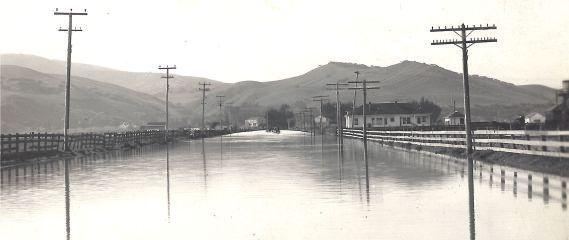

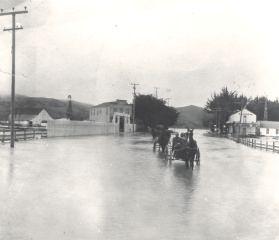
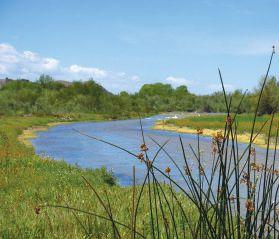
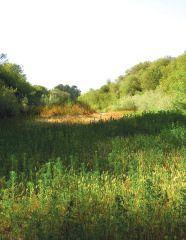
Both the life blood and one of the biggest threats to the region’s agriculture, the Salinas River is the focus of an unusual collaboration of farmers, nonprofits and government agencies, all working together to preserve life along it
 By Kathryn McKenzie Photography by Katie Pofahl and Patrice Ward Illustration by Dina Clark
By Kathryn McKenzie Photography by Katie Pofahl and Patrice Ward Illustration by Dina Clark
“It was not a fine river at all, but it was the only one we had and so we boasted about it—how dangerous it was in a wet winter and how dry it was in a dry summer.”
— John Steinbeck, East of Eden
It isn’t easy to get to know the Salinas River, which is probably why most of us rarely think about it. Many rivers that flow through cities are highly visible and can’t be missed; not so the Salinas, which has the odd habit of disappearing below ground to continue its flow.
It is, as Steinbeck famously wrote in his 1952 masterpiece, East of Eden, a part-time river—and those sandy washes of river channel that peek out along Highway 101 don’t look like much to the casual observer. Also, almost all of the property along the river is privately owned, which makes viewing difficult.
Not many locals know that the Salinas River watershed is the fourth largest in California, more than 170 miles long, or that its health is threatened by urbanization, pollution and a wide variety of human-created problems. Yet this region and its agricultural industry, which the Monterey County Farm Bureau says puts $8.12 billion into the local economy each year, could not do without it.
Without the river, there wouldn’t be a Salad Bowl of the World.
But the valley’s famous fertility comes at a cost. In the past century alone, close to 20 floods have been notable for the amount of damage they caused, according to the Monterey County Water Resources Agency, including back-to-back washouts in 1995 —possibly the worst of all. The floods during the month of March 1995 alone did $230 million in damage to an estimated 1,500 homes and 30,000 acres of farmland throughout the county.
Once more, clouds are gathering as a super-strong El Niño pattern holds simultaneous promise and threat. The good news is that landowners, farmers, government agencies and environmental groups have come together to try to solve some of the issues around the river. The partnership may be the key to preventing flood damage as well as giving everyone a fresh perspective on taking care of the river for future generations.
“And it never failed that during the dry years the people forgot about the rich years, and during the wet years they lost all memory of the dry years. It was always that way.”
—John Steinbeck, East of EdenBecause so much of the land on the banks of the Salinas is privately owned—and so many of the owners are farmers, who must concern themselves with food safety and limit the possibility of bacteria being tracked into the fields—one of the only stretches of river that is open to the public is in Paso Robles, where the city has created a 2-mile Salinas River Walk that eventually will extend 30 miles south to Santa Margarita.

But there is a select club of admirers of the Salinas who have traced it from start to finish, and local resident Katie Pofahl is proud to be a member.
In 2014, she and a few friends decided to walk and paddle its entire length—something they accomplished not all at once, but in numerous expeditions over a period of months.
The Salinas originates in a mountainous region of southern San Luis Obispo County and then flows north, making it something of an anomaly among California rivers, most of which flow south or west. That, and its yearround subsurface flow, one of the largest in the United States, sparked its nickname: The Upside-Down River.
It’s a more important river than this folksy name might suggest. Its watershed encompasses 4,780 square miles and has been named one of the state’s most critical by the California State Water Resources Control Board. The river supplies water not just for agriculture, but also for municipal use from San Luis Obispo to Salinas.
Pofahl and her friends saw gorgeous stretches in south Monterey County where bald eagles soared while green and blue herons
fished in pools surrounded by old growth forests, with “beautiful clear water,” says Pofahl, who is the outreach coordinator for the Elkhorn Slough Foundation. Yet other sections are home to junked cars and all kinds of illegally dumped trash.
“The average person might think it’s a waste pit,” says Pofahl of the river. “But there were so many good things that I saw.”
Landowners are responsible for cleaning up their river properties, and removing not only garbage, but also fallen trees, overgrown vegetation and invasive plants like arundo, a rapidly growing Asian reed that was planted decades ago by the U.S. Army Corps of Engineers to stop erosion, but has itself become a cause of erosion and a flood hazard, not to mention a thirsty guzzler of the area’s precious water.
For the past eight years, such routine maintenance has been on hiatus, due to the expiration of state permits that would have allowed riverside landowners to remove hazards and clear channels. Previously, it hadn’t been a problem getting permits renewed, says Donna Meyers, a watershed management consultant based in Santa Cruz.
But California’s Central Coast Regional Water Quality Control Board denied the renewal of its permit, and updates to the California Environmental Quality Act called for public review and an environmental impact report of the river channel watershed.
“And that process set up opposing sides,” says Meyers, who was eventually brought in to help make peace and get the Salinas River Stream Maintenance Program back on track.
The program, administered by the Monterey County Water Resources Agency in partnership with the Salinas River Channel Coalition, was started after the severe floods of 1995. Shaunna Juarez, MCWRA associate water resources engineer, also helped move the program along after it stalled in 2010.
Part of the problem is that so many governmental agencies have a stake in the river. Permits have to be submitted to not only the State Water Resource Board, which enforces the California Clean Water Act, but also to the Army Corps of Engineers, which oversees the federal Clean Water Act, and the California Department of Fish & Wildlife.
New laws concerning endangered species also weighed down the process, and an endless

series of meetings seemed to go nowhere. Landowners and growers were unhappy, to say the least.
Wayne Gularte, president of the Salinas River Channel Coalition and a longtime farmer, says that the process was hampered by the government agencies’ lack of understanding of the complicated issues involved in farming.
Meyers acknowledges that some meetings were tense: “There was a complex people side to it,” she says.
One landowner who asked not to be named expressed frustration in an e-mail: “Government agencies take months to make decisions, commonly waiting until the last day or two they are allotted to give you a yes or no. To me that shows a huge lack of respect and courtesy … rude, if you would ... as the growers and landowners need to arrange for additional equipment and/or labor to accomplish the job and that process itself takes time to accomplish.
“They do not take into account how much effort and financial commitment are needed to accomplish the project, nor appreciate the huge threat a severely overgrown
river presents to the community at large … think roads/bridges, wastewater treatment plants and all the power line crossings across the Salinas.”
To help make the process a success, Meyers and others involved in the collaboration spent many hours visiting properties on the river and talking to landowners and growers. People whose families had been on the river for generations had special insight into their land, she says.
“We brought everyone to the table,” says Meyers. “Instead of being contentious, we rebuilt the program together.”
It also helped that The Nature Conservancy, a powerful nonprofit that seeks pragmatic solutions to conservation challenges, took an interest in the Salinas River—its health also influences the Monterey Bay National Marine Sanctuary—and began to broker peace between the sides by proposing a science-based collaborative approach.
Jennifer Biringer, former Salinas project director for The Nature Conservancy, says that one of the challenges was getting landowners and growers to understand how their actions on one piece of property affected
other properties down the river. The river had to be looked at as a whole. To illustrate that point, they modeled flow conditions for different types of flooding, which showed landowners how properly maintained secondary channels could “spread out the flow and reduce water velocity,” lessening the chance of farmland washing away, Biringer says. “It was really helpful for them to see the different scenarios.”
In addition, the annual maintenance plans help protect a variety of endangered species along the river, a long list that includes the least Bell’s vireo, the arroyo toad and the California red-legged frog. Of special concern is steelhead trout, which are born in fresh water and travel to the ocean to live as adults, but must return to the river to spawn.
The plan outlines areas for landowners to work on each year, with a biologist carefully marking the areas to be cleared, says Abigail Hart, current Nature Conservancy Salinas project director.
“The landowners bear the costs of the maintenance activities and may choose to work in secondary channels or not, based on

“And it never failed that during the dry years the people forgot about the rich years, and during the wet years they lost all memory of the dry years. It was always that way.”
— John Steinbeck, East of Eden



the conditions in the river and their financial priorities for the year,” says Hart.
A demo project on an 11½-mile section of river in Chualar and Gonzales has been completed, and now permits have been submitted for more than 90 miles of river, involving at least 60 different landowners and growers, according to Meyers. If all goes as planned, they’ll be able to do necessary river maintenance this fall.
“It’s really exciting,” says Abby TaylorSilva, vice president of the Grower-Shipper Association of Central California, a Salinasbased agricultural industry group that also helped smooth the way for river maintenance. “It’s really helping us understand what we can do to avoid flooding and bringing a foundation of science on which to make decisions.”
It’s her hope that this is the beginning of a new and better relationship between landowners and scientists so that the Salinas Basin can be managed in the best possible way.
Developing good science and data, Taylor-Silva says, is vital, and she would like to see involvement of local universities like CSU-Monterey Bay in studying the river further.
Gularte says he’s always felt that the right approach would benefit all parties involved.
“I always said, let’s make this a win-win situation for everyone—help protect the land, help with water quality, protect endangered species—and I think this is a triple-win for everyone involved.”
A special arundo abatement project is also under way, led by the Resource Conservation District of Monterey County, an important step in flood control, since the arundo thickets trap soil and other floating items when the water rises.
“The river tore the edges of the farmlands and washed whole acres down; it toppled barns and houses into itself, to go floating and bobbing away.”
—John Steinbeck, East of Eden
The story of the Salinas River is still being written. And reducing flood danger is just one aspect—ongoing worries and tensions about pollution, water rights, groundwater overdrafts, saltwater intrusion and recreational access are also problems to be dealt with.
For now, the people who are collaborating on preserving and restoring the river feel that they’re taking the efforts in the right direction.
In the short term, while flood years can follow severe drought, as happened in 1978, local farmers and officials seem optimistic that there won’t be much flooding this year.
“There’s very little flow in the river. It’s pretty stark out there because of the drought,” even after several substantial storms, the MCWRA’s Juarez noted in late January.
Longer term, the collaborators feel the maintenance plans will go a long way toward protecting life along the river.

“The project doesn’t address catastrophic flooding, but has charted a path forward, establishing a foundation of science and partnership that will serve stakeholders well in deciding how to manage the river for more severe flood events,” says The Nature Conservancy’s Hart.
“In a year like 1995, which was a 100year flood, very little can be done to reduce flooding,” Hart adds. “However, the work we are proposing addresses the most frequent flood events—2-, 5- and 10-year flood events that landowners along the Salinas face, similar to the amount of water that came through the river in 2011.”

Taylor-Silva, whose father and grandfather farmed along the river, says adjusting to changing times is a necessity, and working to find solutions is all-important.
“People are really happy to have a plan,” she says of the river maintenance program. “We’ve learned from the process.”
“It’s a beast, and there’s a lot of it,” says RCDMC executive director Paul Robins, who says there are tens of thousands of acres of arundo to be eradicated in the river corridor. But a $3.3 million grant to eradicate 350 acres of arundo was up for approval by the Wildlife Conservation Board in February, and Robins is hopeful that the weed will be under control in 10 to 20 years. Opposite: Views from the riverbed: clockwise from upper right, the Bradley overpass; a farm seen from a wildlife fence along the Salinas; wildlife using the river and Katie Pofahl during one of her Salinas River trips.

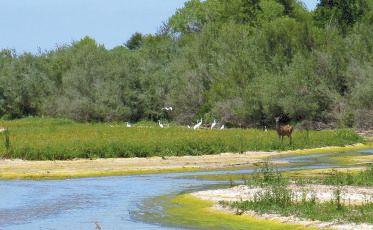


“The river tore the edges of the farmlands and washed whole acres down; it toppled barns and houses into itself, to go floating and bobbing away.”
— John Steinbeck, East of EdenPhoto upper left by Oren Frey, others by Katie Pofahl

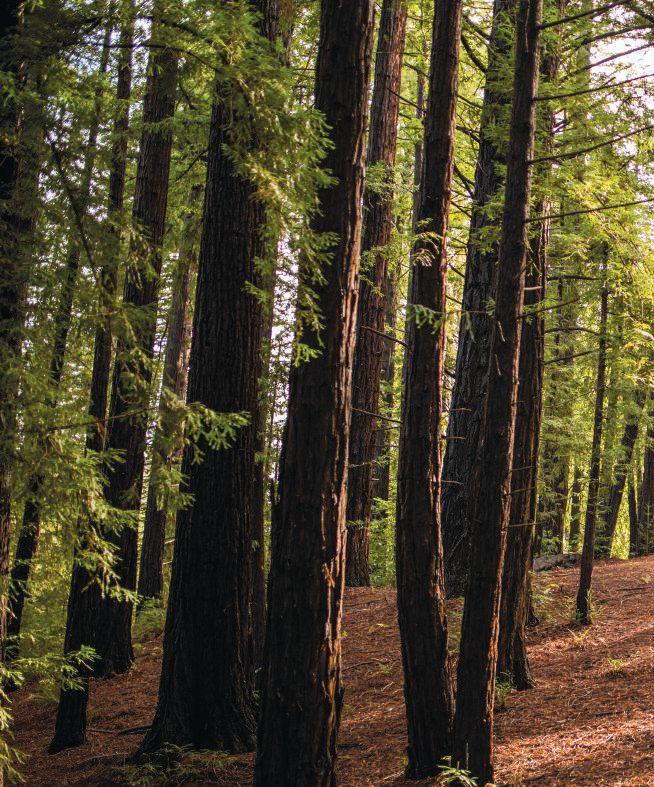 By Deborah Luhrman Photography by Kodiak Greenwood
By Deborah Luhrman Photography by Kodiak Greenwood

Ironically one of the most inquisitive and literary chefs in the Monterey Bay area dropped out of high school in his freshman year. Sierra Mar executive chef John Cox—a frequent contributor to Edible Monterey Bay magazine—left school to pursue his diploma via correspondence classes when he was 14.
“There were three stipulations,” he recalls. “We had to get rid of all the TVs in the house, I had to work full time and I had to cook dinner once a week for my family.”
Aha, so that was the start of his gastronomic career you might think. But his budding interest in food was his own, and he went to great lengths to explore it. He remembers gathering up his friends, for example, and using paper route money to go out to eat at some of the swankiest restaurants in Santa Fe—a half-hour bus ride from where he grew up in Los Alamos, New Mexico.
“We were probably their worst customers,” he says with a laugh. “We couldn’t drink, we couldn’t afford entrées, so we’d get four appetizers and two glasses of water. It was always awkward, because somebody would drop their fork, but it was fun and I just loved the whole restaurant culture.”
Cox helped out at a bicycle repair shop and tried apprenticing to an aircraft mechanic, but hated it. As soon as he was old enough to work legally, he talked his way into a job washing dishes at the local bistro and began buying every cookbook he could get his hands on, working his way up to a sous chef/pastry chef position.
When it came time to go to college, he considered studying philosophy and the classics. He dreamed of going to Alaska to learn about Inuit culture, but culinary school was beckoning. “My Dad was definitely not impressed with my choices. I think cooking school seemed like the best of three pretty bad options,” he says. “At least I could probably make a living.”
The New England Culinary Institute was where he went, avoiding the snowy Vermont winters by taking his first internship at Abacus, a justopened fusion restaurant in Dallas run by chef Kent Rathbun, and his second internship with chef Craig von Foerster at Post Ranch Inn’s Sierra Mar restaurant in Big Sur.
“I had never been to Big Sur, but as soon as I stepped into the kitchen there, I felt at home,” he recalls. “It was kind of like going into a hobbit kitchen, because you step down into this subterranean room, then you have a beautiful view of the ocean and the living roof on top.”
Von Foerster—a legendary local chef who worked 19 years at Post Ranch—became his mentor, instilling in him a drive for perfection and a love for learning new techniques.
“He was the sweetest guy in the world and an amazing chef,” Cox says. “He would take a dish, let’s say Thai curry, and he would make and refine that Thai curry for weeks or months until he felt it was perfect, and then he would never make it again.”
“I definitely have that inquisitive nature that Craig had, but it’s less about refinement, refinement, perfecting, perfecting and more about understanding what’s going on around you,” he adds.
Cox rose quickly from intern to cook and then chef de cuisine at Sierra Mar; after three years he knew it was time to spread his wings and try running his own kitchen.
Executives at Passport Resorts, the owner of Post Ranch, gave him that chance by offering Cox the top post at the restaurant of their Hotel Hana Maui at age 23.
“I was really, really young and really ambitious,” he says, explaining that working on the remote eastern side of Maui had a huge influence on his cooking style.
“Hana is three hours to the nearest town. It makes Big Sur look like a suburb of Monterey,” he says. The hotel kitchen was the very last stop for trucks bringing in food supplies.
“We’d get whatever was left on the semi truck after they’d gone around the island, so it was just junk, and everything came from the mainland.”
But living in a tropical paradise where anything grows, Cox knew he could do better, so he gave up on the high-end purveyors and started working with local farmers, fishermen and foragers. He contracted for vegetables from a farm near the town of Hana and fruits from an upcountry orchard of apples and persimmons.
“One guy would go into the Haiku rainforest with a wooden plane and pull cinnamon bark off the tree the same morning I was going to use it,” he recalls with a hint of nostalgia. “In my greens mix we had six different types of wild spinach, and farmers would go out and harvest 23 or 24 different types of edible flowers and leaves from the rainforest each day and deliver them to us.”
Then there were the economics. Cox decided if the hotel was going to spend lots of money on ingredients, it was better to pay a local fisherman $10 a pound for fresh snapper or a forager $15 a pound for mixed greens and keep the money in the community.
“That was 14 years ago, before the whole Nordic food revolution. Micro-regional hadn’t become a thing yet, and we were way ahead of the curve,” he says. “But I’ve always carried that idea with me. I want micro-regional.”
Eventually Cox made his way back to the mainland, bringing his delicious micro-regional approach to Carmel where he headed the kitchens at La Bicyclette and Casanova. Many of our area’s talented young chefs have worked in Cox’s kitchen at some point, including: Brad Briske (La Balena), Brian Kearns (La Bicyclette), David Baron (Casanova), Jacob Burrell (Big Sur Bakery), Aaron Burns (The Bench), Kyle Odell
“My Dad was definitely not impressed with my choices. I think cooking school seemed like the best of three pretty bad options.”
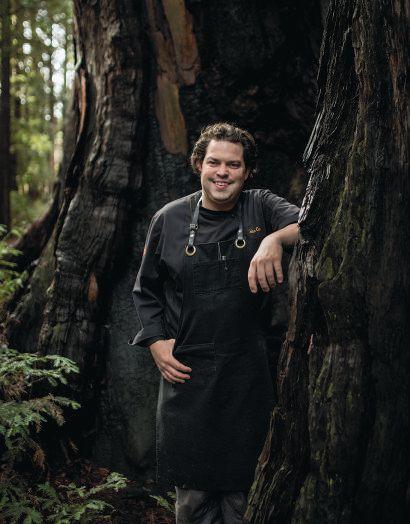


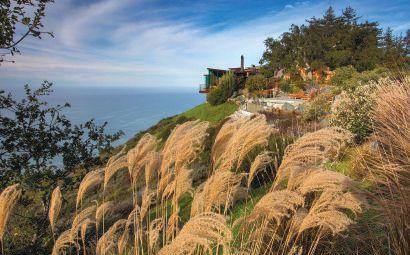
Clockwise from upper right, microgreens in the Sierra Mar greenhouse, cook Julia Felder, Cox and the Sierra Mar deck and dining room.
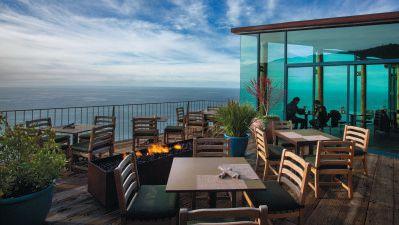



“One of the most rewarding things for me is seeing how many people who have cooked with me have moved on to managing their own kitchens—it’s amazing,” he says.
When Von Foerster left Post Ranch in 2012, Cox was ready to step into his shoes. He wasted no time in expanding the chef’s garden, installing a chicken coop, building bee hives and creating the resort’s signature dining experience, the nine-course Taste of Big Sur tasting menu. (See “Tasting Big Sur,” opposite.)
The hyper-local menu is a perfect complement to the sweeping views of the Big Sur coast from the floor-to-ceiling windows and terrace of the Sierra Mar dining room. It’s also a good match for the designs of architect Mickey Muennig, who created the restaurant and other buildings at Post Ranch Inn with natural materials and organic forms to blend seamlessly with the surroundings.
The menu changes with the seasons, and often tests the limits of the culinary frontier with ingredients like jellyfish, sea cucumber, sheep sorrel, bay laurel and even rattlesnake. Yet far from being acquired tastes, the resulting dishes are accessible, delivering balanced and delicious flavors.
“For chefs today, our biggest challenge to cooking really well is that things are too readily available,” says Cox. “I can get monkfish, sea urchin, Australian truffles, Australian abalone. There’s absolutely no limit to what I can get, and that becomes a problem because you start to get the kind of cuisine that’s all over Instagram and it’s very much a mono-culture.”
So Cox relies on the 100-acre Post Ranch property and the coastline stretching to Monterey for most of his ingredients. He also looks to the past, cooking with acorns like the Esselen people who once inhabited the Big Sur area, for instance, and even experimenting with ant vinaigrette.
“We use about 150 pounds of acorn flour a month, so much that it has kind of become a bass note that you don’t get at any other restaurant,” he says.
The kitchen creates more than 100 different dishes a week for hotel guests, who often stay at the resort for weeks at a time and are accustomed to eating in the world’s finest restaurants. Some ingredients come from outside the area and some of the dishes are more familiar.
“I do use things like white truffles and foie gras, but that’s not the heart of what we do,” Cox says. “When it comes to trying to create our signature cuisine, we hammer on the local ingredients.”
Gifted with a great eye that makes his frequent contributions of photography to Edible Monterey Bay so stunning (he shot the abalone on EMB’s inaugural cover, as well as the delicate jellyfish course on the front of the magazine’s special water issue in Summer 2014), Cox also does remarkable justice visually to the Big Sur coast with his cuisine. He and pastry chef Yulanda Santos use color and composition to create dishes of unusual and striking beauty, served on tableware he has commissioned from craftspeople such as glass artist Shelby Hawthorne and ceramicist Eefje Theeuws, with inspiration from local beaches and forests to complement each dish.
Chef John Cox’s Big Sur tasting menu is both earthy and ethereal: it offers ingredients from local forests and the nearby sea and delivers them from a magnificent cliff-top setting with soaring combinations of tastes, textures and colors.
A nine-course Taste of Big Sur menu is served for dinner ($175) and a five-course version is available for lunch ($95)— when views are at their best. (A prix-fixe lunch menu also features some of the same ingredients and flavors, at a more earthly charge of $55 for three courses.)
The menus change with the seasons, but will likely include acorn bread and cheeses made at Charlie Cascio’s Sweetwater Farm in Palo Colorado. The rest is up to the fertile imaginations of executive chef Cox and his team of 20 passionate cooks.
On a recent visit, cured venison with pine nuts was served on a lacquered cross section of a sugar pine cone, with pine nuts clearly visible nestled inside the cone and echoed by pine nuts in the appetizer. Tiny bits of blackberry underscored the forest theme, providing a refreshing burst of tartness that sliced through the richness of a dollop of pine nut purée.
In addition to balance and style, chef Cox’s cuisine tastes sublime.

An entrée of black cod was steamed to perfection with no hint of oiliness often associated with this fish. It was presented dramatically on matte black stoneware with “textures of sunchokes.”
One of the last crops to be harvested from the Post Ranch garden before spring planting, the sunchokes were prepared four different ways: a smooth purée, sunchoke chips both crisped and soft were laid across the top of the fish in a scale pattern and accompanied by sunchoke “raisins,” dehydrated sunchokes soaked in maple syrup, which added a sweet, festive note to the dish.
A show-stopping dessert called Sticks and Stones, created by pastry chef Santos, ended the menu on a high note. She mixes impossibly intense dark chocolate and cherry flavors in her sticks and creamy bittersweet chocolate in a pair of truffle “stones” dusted with salty nori and coffee-like bitterness from cascara—a berry often used for medicinal purposes by Native Americans.
Cox has a full agenda for the upcoming year. He is making charcuterie: prosciutto, chorizo, lomo and hunter’s loop sausage using wild boar, Carmel Valley Berkshire pigs and wild fennel. With the help of gardener Anton Tymoshenko, he has started growing fungi: delicate pink oyster mushrooms, yellow oyster mushrooms and shiitakes. He wants to build a quail coop and is starting an heirloom fruit tree orchard with grafts from ancient fruit trees discovered at old Big Sur homesteads. He’s sure to remain a frequent participating chef at gourmet food festivals and local fundraisers, and will be exploring new food topics in his travel and writing. Oh, and he is restoring a 25-foot Coronado sailboat and wants to learn to sail.
“I have so many projects and so many things I love, but to get this restaurant to the next level, I know I have to put the blinders on and dig in and push,” he says. “For me personally as a chef, my challenge is to turn off that inquisitive gene and turn on the perfectionist gene, to focus on how I can make the best nine dishes that reflect Big Sur and just perfect them.”
And he doesn’t have to go far for inspiration.
Cox says he takes a break several times a day and steps outside his kitchen door to pick herbs from the roof or just take in the breathtaking view of the gardens, beehives, birds and wild coastline: “It’s amazing that I’ve been working here on and off for 15 years now, and when I see the Santa Lucia Mountains on one side and the Pacific on the other, I still feel that same awe as when I first came.”
Sierra Mar/Post Ranch Inn 47900 Hwy. 1, Big Sur • 831.667.2800 • postranchinn.com
RECIPE: See p. 50 for Cox’s recipe, Steelhead Trout, Crispy Skin, Wild Oxalis and Smoked Steelhead Roe.
READ: For more on the stories of John Cox and the natural and culinary history of our region that they contain, see Grist, p. 6. You can find all of John Cox’s stories for EMB by searching his name at www.ediblemontereybay.com.

Last year in the depths of the drought, John Cox gained nationwide attention for hooking up an air compressor to the dishwashing station in his kitchen.
Applying his creativity and concern for the environment, he discovered that by using air instead of water to “pre-rinse” dishes before they go into the dishwasher, he could save hundreds of gallons of water each day. It cuts daily water usage at the dishwashing station at Sierra Mar by about 80% from 1,000 gallons to 200 gallons a day.
And that water savings helped the bright idea catch on like wildfire across parched California. Restaurants like Soif in Santa Cruz, and others around the state, have installed their own compressors for about $200 each. Cox is now working on his idea with an engineer to design a compressor specifically for kitchen use.




Steelhead trout is an important species of fish in the Big Sur watershed. Unfortunately the wild population has reached critically low levels, so we use sustainable steelhead from Mt. Lassen, Calif., in this preparation.
For the Trout In the restaurant we cook the trout sous vide and then quickly brown it in a sauté pan. This creates an incredibly delicate flavor and texture, infusing the trout with the aromatics. But if you are not set up at home to cook sous vide, simply cooking the trout in a sauté pan also works well.
2 pounds steelhead trout filets, skin carefully removed
1 Meyer lemon, thinly sliced
2 cloves garlic, thinly sliced 1 small bay laurel leaf 4 tablespoons Meyer lemon agrumato 4 twigs thyme 2 tablespoons rice oil Sea salt
Cut the trout into four equal portions. Place all ingredients into a vacuum bag and seal. Cook trout in a thermal circulator (sous vide machine) at 43° C for 25 minutes. In a large, heavy-bottomed sauté pan over high heat, bring rice oil to smoking point. Remove trout from bag and dry with paper towel. Place in pan to brown; remove with fish spatula once bottom has browned (about 30 seconds).
Alternative method (without sous vide): Add oil to sauté pan and bring up to smoking point. Add the trout to brown, then flip, remove from heat and add the remaining aromatics off the heat.
Crispy Trout Skin Chips
Skin from trout filet, all scales and meat removed 2 cups rice oil Kosher salt
Place the trout skin on a nonstick baking sheet and flatten as much as possible. Bake the skin in a low oven with fan until dry (3 to 4 hours). Bring the rice oil to just below the smoking point in a wide saucepot. Break off a small amount of the skin and drop into the oil—it should puff up immediately. If it does not, oil is too cold. If it puffs and browns, it is too hot. Adjust temperature as needed and repeat test. Once proper oil temperature is reached, break the skin into four pieces and fry in oil. Rest fried skins on a paper towel-lined plate and season with salt.
Sorrel Purée At Post Ranch we have many types of wild and cultivated sorrel. For the sauce we use French sorrel from our garden. This sorrel has a bright and delicate citrus flavor and bright green color. Unfortunately, however, the color is very volatile and the slightest bruising or heat will turn it Army green. To maintain the sorrel’s color and flavor, this sauce needs to be made at the very last minute.
2 cups almond milk 1 tablespoon tarragon leaves 12 chives 2 tablespoons chopped parsley 1/4 avocado 1/2 cup spinach leaves 2 cups French sorrel leaves, stems removed Salt, to taste
Just before serving, put all items in blender and blend until smooth. Season with salt, to taste.
Lemon Verbena-Braised Turnips
12 baby turnips, well scrubbed 2 tablespoons butter 4 lemon verbena leaves 1 tablespoon Meyer lemon juice Salt, to taste
Put butter in a sauté pan over medium heat. Once butter starts to bubble, add the turnips. Add the verbena leaves, lemon juice and salt. Continue cooking over low heat until turnips are fork tender but not brown.
•Wild-foraged sorrels: sheep sorrel, oxalis leaves, oxalis roots, wild blue oxalis or oxalis flowers
•Cultivated sorrels: red-veined sorrel, French sorrel
•Smoked steelhead trout roe or trout caviar

I got into archery through yoga. Fifteen years ago, in the middle of a warrior pose, the teacher explained that the intent was to emulate soldiers from ancient India; our aim was to fix our eyes beyond our outstretched arms and just beyond our fingertips, finding the precision of the the archer. Archery and yoga both ask the practitioner to create a perfect suspension between push and pull, so much so that time and the human experience seem suspended for a moment. It’s a powerful thing.
Archery has a long history in recreation and warfare—and it has an even longer history in hunting.

The Pomo Indians of California almost exclusively caught their prey with archery. Today, there are between 150,000 and 300,000 bow hunters in California, according to Wayne Raupe, president of the California Bowmen Hunters/State Archery Association, although it’s hard to know the exact number since California at present doesn’t require a specific bow hunting license, only a generic hunting license.
Bow hunting is more than a sport; it is a lifestyle that takes the idea of slow food to a whole new level. Practitioners don’t just know where their meat comes from, they choose it—mostly wild boar, turkeys and deer here on the Central Coast—and harvest it themselves.
The hunters I spoke with in the area all say it takes a great deal of time and commitment to successfully hunt with a bow. For some would-be hunters, that rigor makes the idea of bow hunting seem like a fantasy. But the challenge it presents is precisely what inspires and even obsesses many others. Indeed, bow hunting and archery are very much alive on the Central Coast, and there lots of ways for even the greenest of novices to become proficient.
First things first: You want to start with target practice. A lot of target shooters never go on to hunt with a bow, but if you dream of taking down your own prey, you have to be an excellent shot.
As Cody Dumont, an artisanal bow maker and owner of Tenbrook Archery in Santa Cruz says, “If you can’t make a humane kill, you shouldn’t be hunting. It can take years to get good enough to go out and hunt.”
Dumont means that you have to be able to make a fatal hit to the heart or the lungs; either target is no bigger than a softball and a moving one at that. Luckily, the target ranges here are friendly and accessible, so getting started is easy, and once the first arrow is loosed, it’s hard to stop practicing.
Archery Santa Cruz has been teaching private archery lessons since 2014 and earlier
this year opened a short-distance archery range on Walnut Avenue in downtown Santa Cruz.
Owners Ian Garner and Erica Gregory have an infectious love of the sport that you can feel as soon as you walk into their little sun-filled range next to the Social Security building. It’s like you’ve found one of Santa Cruz’s best kept secrets and instead of pretense, only good, old-fashioned fun is happening inside.
But make no mistake: Form, safety and a positive attitude are paramount here, and both Gregory and Garner, who met and fell in love through archery, are certified USA Archery instructors. They offer different sizes of fiberglass bows and lots of arrows to practice with. Garner also makes bow strings by hand, and if you or your child needs a new string, he’ll let you choose the colors.
If you’ve decided you’re ready to take your archery to the next level, you might want to buy your own bow and some arrows. It’s the norm to buy a fiberglass recurve bow when you’re first starting out, and those are available from several archery shops around the tri-county region. (See listing at right.)
But there’s nothing like having a locally made, personalized piece of archery equipment that performs flawlessly.
For a gorgeous, handmade “traditional” longbow or recurve bow, Tenbrook Archery’s
The following resources will help you get started, whether you plan to take up archery only or bow hunting as well.
Information on Licensing, Regulations and Hunter Safety Classes: California Department of Fish and Wildlife www.wildlife.ca.gov
Archery Clubs:
Mt. Madonna Bowmen Watsonville www.mountmadonnabowmen.com
Santa Cruz Archers Santa Cruz www.santacruzarchers.com
Salinas Bowmen Salinas www.salinasbowmen.org
Archery Gear Purveyors and Target Ranges:
Archery Santa Cruz Santa Cruz www.archerysantacruz.com
Jim Cox Archery Shop Salinas www.jimcoxarcheryshop.com
Predator’s Archery Gilroy www.predatorsarchery.com
Tenbrook Archery Santa Cruz www.tenbrookarchery.com
Hunting Guides:
Bryson Hesperia Resort Bradley www.brysonresort.com
It’s like you’ve found one of Santa Cruz’s best kept secrets and instead of pretense, only good, old-fashioned fun is happening inside.
Dumont makes custom pieces for people worldwide, both for target archery and bow hunting. Lined together like the ribs of a resting beast, the wooden bows gleam richly in the sunshine of his Westside studio.
Dumont also teaches bow-making workshops a few times a year out of his studio. For $250 you can shape your own bamboo and ipé bow, make some arrows with turkey feather fletching and meet some affable characters in a beautiful spot. Dumont’s portly beagle will probably steal the donut you’ve set aside to split your turkey quill, but it’s part of the charm.
For the whole archery experience, Santa Cruz Archers, a club affiliated with the National Field Archery Association, runs an indoor and outdoor archery range in a somewhat hidden part of Santa Cruz’s DeLaveaga Park.

Club president Andy Sterbenz, a quiet and perceptive fellow who has been shooting for 16 years, enjoys the camaraderie and integrity of the folks at the range.
“No one’s ever going to say, ‘Hey, you’re doing that wrong!’ Instead, they’ll come over and help you figure out what’s not quite working, give you some pointers and help you shoot better and safer. That’s what it’s all about.”
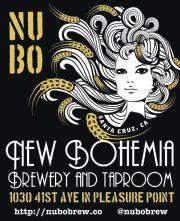
Becoming a member takes a few steps, including finding a sponsor and paying a $100 fee. But after that you can attend special events, shoot at the indoor and outdoor ranges year round and enjoy plenty of other perks, not the least being the ability to enjoy the beauty of Santa Cruz County’s forests while honing new skills and making new friends.

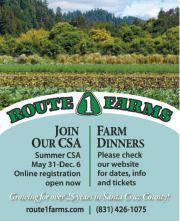
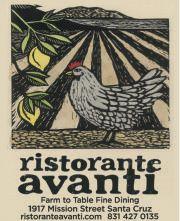
If hunting is your ultimate aim, you’ll need to obtain a California hunting license, for which a hunting safety class is required. (Like any form of hunting, this is a dangerous sport, and focusing on safety is of utmost importance.)

The state also offers a bow hunting education course and is considering making it a requirement before going into the field.
Finding a place to hunt is the next challenge, but the U.S. Bureau of Land Management allows some of its land to be used for hunting, and the California Department of Fish and Wildlife has updated information on when and where bow hunting is allowed. Some hunters use a friend’s private land, and it’s also very common to use a rancher’s property.
Guided hunt operations are also a good way to navigate the maze of restrictions and land boundaries in the region; the guides, some of whom have been leading hunts for
30 years, have agreements with various ranchers to use their land.


There is a lot to learn, and the CDFW’s Lt. Alan Gregory holds regular advanced hunting workshops in our region, such as one-day wild pig hunting clinics, which include all of the above-mentioned topics, plus how to process your kill and other information you’ll need to know.
Back at Archery Santa Cruz, co-owner and instructor Erica Gregory says for her, archery was “love at first shoot.” She describes the attraction coming from the sport’s combination of solitary and communal aspects, as well as
the ever-satisfying whisper and hit of an arrow that has struck its target.
A warm, intuitive and precise teacher, she helps you align your body in a single constellation of connections that are released through an arrow.


You’ve hit your mark and you realize that you can focus in a whole new way. Gregory high fives you.
It’s addictive, and it’s only the beginning.

Andrea Riordan is a Santa Cruz-based food politics writer and teacher. Her first love is poetry.
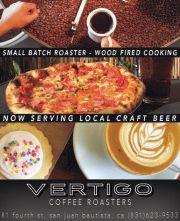
About 12 years ago I had my first introduction to making miso. I was working with a local organic farm and the farmer’s wife was Japanese. She invited me to join a gathering where everyone was going to make their year’s supply of miso—the flavorful and nutritious Japanese seasoning paste made from long-fermented beans and used in soups, dressings and sauces.
I was very interested in food preservation of all kinds, but this intimate gathering of friends intimidated me. Toku assured me that it would be casual and that for most of the people there, it would be their first time making miso, too.
I was not sure what vessel I should bring as I was only told that it should be of food grade, meaning safe for food. I settled on a 5gallon ceramic crock as miso is one of my favorite condiments and I knew I wanted to
Gathering to make a savory Japanese condiment provides a window on a traditional food culture and a lesson in patience.
 By Jordan Champagne Photography by Margaux Gibbons
By Jordan Champagne Photography by Margaux Gibbons
make a lot. I can be quite clumsy in contrast to the extremely graceful Japanese culture, and I remember feeling particularly so while walking up the stairs to her house carrying the heavy crock, my baby strapped on my back. But Toku greeted me at the door with a warm smile and helping hands that put me at ease. Inside, there was a bustle of women, beans, koji—grain or beans that have been treated with a fermentation culture—grinders and salt. Toku’s best friend, Chikurin, was at the grinder, leading the group of novice miso makers.
Communities all over the world gather together for large food projects. I think of the large community bread ovens of Europe or the groups of aunties in the kitchen preserving away over boiling kettles in the heat of the summer wherever fruits and vegetables are found in abundance. Food has a remarkable
way of bringing sustenance into our lives on so many levels, and the community connection it creates is a very strong benefit—and the reason I remain working with food.
In Toku’s family it was her grandmother who made miso when she was growing up in Japan.
“My grandmother used to make miso with the neighbor lady,” she says. “She made a big fire outside by the neighborhood shrine right across from our house. She cooked the beans there with wood in a large pot.”
The shrine was Shinto, and Toku described in detail the red entrance and brick walkway to the altar. I found it interesting that Toku’s grandmother made her miso there, and she remarked that no one else did this.
“My grandmother’s miso was the best,” Toku says with a beaming smile.
The gathering I was invited to was a group of 10 Japanese women. They wanted to engage in what was for them a lost art of their culture’s food traditions.
One detail that had an impact on me was that some of the women were using 5-gallon plastic buckets as their vessels. It really surprised me and yet it also made me feel at ease. It made me realize that trying to blend traditional ways into our modern lives isn’t always going to bring results that match our romantic notions of traditional cultures and their food preservation practices. On the one hand, the plastic 5-gallon bucket was more practical as it was light, had a built-in handle and presented no risk of breaking. But somehow, fermenting miso in a plastic bucket also seemed a contradiction to my sensibilities and I wondered if, given the choice, Japanese grandmothers would use a plastic bucket instead of a ceramic crock. My guess is, due to the convenience, most of them probably would. Sometimes it is not the vessel that counts, but the love it contains!
Jordan Champagne is the co-owner and founder of Happy Girl Kitchen Co. She has a passion for preserving the local, organic harvest and loves sharing her secrets at the workshops she teaches across the region. Miso making is among the many techniques she teaches.
RECIPE: See Champagne’s recipe for making your own miso opposite.

Be forewarned that your miso will take a minimum of a year to ferment. But it’s worth the wait. Aside from being a versatile and delicious condiment, miso is also a complete protein containing all of the amino acids essential to human nutrition. In addition, it contains an alkaloid called dipicolinic acid that binds with heavy metals and carries them out of the body, making it very detoxifying.
Miso can be made out of various beans and grains, each lending a different color, texture and flavor to the final product; experiment by making different combinations in small batches. Traditionally miso is made with soybeans, koji and salt. Koji is made from grain or beans that have been inoculated with spores of Aspergillus oryzae, a mold that starts the miso fermentation.
Koji can be found locally in Japanese markets or can be ordered online from companies such as GEM Cultures Inc.
2 kilograms rice koji 2 kilograms soybeans, cooked 0.8 kilograms sea salt
The beans should be cooked thoroughly until they are very soft when pressed between your thumb and baby finger. Drain beans and reserve some of the liquid. Next, you need to grind or mash your beans to a creamy consistency. The Japanese traditionally used a mortar and pestle, but you can also use a potato masher or meat grinder.
While the beans are still warm, massage them together with the koji. Add the salt and mix completely. The consistency should be a moist paste, kind of like miso. If it is too dry, add some reserved liquid.
The vessel in which you ferment your miso should be of food grade (safe for food). To inhibit unwanted mold growth, first put a layer of sea salt on the bottom of the container.
The next part, a special technique for eliminating air pockets as you load the miso into your vessel, is a lot of fun. Techniques such as this are awkward to start but become mastered over time through practice. Using your fist, make a ball of the paste and then fling it into the bottom of your bucket or crock with great force, filling the container with one ball at a time. This is also a
great time to send good thoughts and blessings into your preserve.

Lastly, cover the miso paste with a thick layer of salt to inhibit unwanted mold and make the container air tight by covering with a piece of wood or a ceramic plate weighed down by something heavy.
Now the long wait begins. This is the hardest part about making miso. It is recommended that you wait at least a year for your miso to be finished, but I have had 7year miso that is simply amazing. The longer you wait, the more complex the flavors become. This gives you a chance to develop patience. It is like planting a fruit tree from which you’ll need to wait years to collect a harvest.
Once you are ready to dig into your miso, you may find a layer of mold on the top. Simply scrape it off and taste your miso. It will likely be AMAZING!!! Decant it into clean glass jars and store them in the refrigerator or in a cool, dark cupboard. If stored out of the refrigerator, however, fermentation will continue, so you must release the pressure occasionally by opening the lid.

The perfect pizza crusts at Gusto come from the bright red wood-fired oven that greets visitors to Denis Boaro’s Seaside restaurant as they walk through the door.

Carried Away
7564 Soquel Drive • 831.685.3926 www.carriedawayfoods.com

A cozy, green-certified, take-out or eat-in café, Carried Away has a menu that changes weekly and features primarily organic, locally sourced ingredients. Owner/chef Tom McNary worked for many years at Chez Panisse, and his dishes reflect the seasons. Soups, salads, entrées and desserts are all made freshly daily. Thin-crust pizzas available on Tuesday, Friday and Saturday. Open M–F 11am–7pm, Sa 11am–5pm, Su closed.
Sierra
47900 Highway 1 • 831.667.2800
www.postranchinn.com

Executive chef John Cox has created for this iconic restaurant a nine-course “Taste of Big Sur” dinner tasting menu that delivers an inventive and gorgeous take on the Big Sur experience through exceptional ingredients grown on site or procured from local foragers, fishermen and farmers. Lunchtime guests can enjoy the breathtaking views from Sierra Mar’s floor-to-ceiling windows and cliffside terrace as well as a three-course prix fixe option and a five-course tasting menu comparable to the restaurant’s evening fare at a fraction of the price. Open daily for lunch 12:15–3pm, dinner 5:30–9pm.
New Leaf Community Market
13159 Highway 9 • 831.338.7211 • www.newleaf.com
The perfect place to stop for made-to-order sandwiches, trail mix and picnic supplies for hikers on their way up to Big Basin or Castle Rock State Parks. All ingredients are fresh and natural, meats are hormone free, produce comes from local growers. Open daily 9am–9pm.
New Leaf Community Market
1210 41st Avenue • 831.479.7987 • www.newleaf.com
The Beet Café at the entrance offers great alternatives to fast food, serving economical daily specials, wraps, pizza and homemade soup and smoothies—with free wi-fi in the dining area. Inside, a full deli has made-to-order sandwiches, healthy takeout salads and entrée items. Open daily 8am–9pm.
Shadowbrook

1750 Wharf Road • 831.475.1511 www.shadowbrook-capitola.com
Everyone’s special occasion restaurant, this unique destination is perched on a lush hillside above Soquel Creek. Its multi-level rock and redwood dining rooms are decked with fairy lights and you arrive in a vintage cable car—a truly romantic experience! New executive chef Roger Gowen offers farm-fresh local produce, fresh herbs from a rooftop garden and many vegetarian options. Open M–F 5–8:45pm, Sa 4:30–9:45pm, Su 4:30–8:45pm.
Monte Verde at Seventh • 831.624.8578 www.auberginecarmel.com
Located within the romantic L’Auberge Carmel, a visit to Aubergine feels a bit like a trip to Europe. But the food is the real draw here: executive chef Justin Cogley was named one of Food & Wine’s best new chefs of 2013 and it’s no wonder. He’s an eloquent and imaginative interpreter of fine seasonal ingredients and executive pastry chef Ron Mendoza—who won the reader-selected 2015 EMB Best Pastry Chef Award— delights with surprising and inventive desserts. Open daily 6–9:30pm.
San Carlos Street between Ocean and Seventh avenues (Paseo Courtyard) 831.626.8226 • www.basilcarmel.com
“Organic, local and seasonal” are not just buzzwords at Basil. This cozy restaurant in the Paseo Courtyard is the first and only one in the area to earn three stars from the national Green Restaurant Association. General manager/owner Denis Boaro and chef/owner Soerke Peters turn out intensely flavorful dishes—like black squid ink linguine with sea urchin sauce and Monterey abalone in vermouth butter sauce—and provide a full bar with a great selection of California wines. Many vegan entrées available. Heated, dog-friendly outdoor seating. Open daily for lunch and dinner from 11:30am, Su brunch 11am–3pm.
California Market at Pacific’s Edge
Hyatt Carmel Highlands 120 Highlands Drive 831.620.1234 • www.pacificsedge.com
Enjoy organic, sustainably sourced farm-to-table favorites on the redwood deck overlooking the Pacific or indoors next to the cozy pot-bellied stove in California Market while waiting for the highly anticipated upstairs restaurant (formerly Pacific’s Edge) to reopen in midApril. Breakfasts include vegetable fritatas and eggs benedict, lunch features fresh soups, salads and fish tacos. At dinner the focus is on seafood; don’t miss the octopus confit appetizer. Happy hour M-F in the Sunset Lounge. Breakfast and lunch 7am-3:30pm; dinner 5:30-8:30pm, winter; 6-9pm DST. Sunset Lounge 3:30-9:30pm.
Cantinetta Luca


Dolores Street and Ocean Avenue • 831.625.6500 www.cantinettaluca.com
Prepared in the Tuscan tradition, using the freshest and simplest ingredients sourced locally or imported from Italy, this authentic Italian eatery serves housemade breads, pastas and sauces, hand-cut premium meats and antipasti with chef Jason Balestrieri’s artisanal salume. Guests are served in an atmosphere of warm tones and dark woods, which invites lingering over a second glass of wine or another bite of tiramisu, apple crostata or cheese. Open Su–Th 11:30am–9pm, F–Sa 11:30am–10pm.
Doud Craft Studios • San Carlos Street at Ocean Avenue • 831.624.1600 • www.carmelbelle.com
This bright, airy restaurant is a favorite gathering place among families, hipsters and others of all ages looking for a casual atmosphere and a stellar breakfast, lunch, dinner or freshly pressed juice. Chef Kyle Odell and pastry chef Eden Hutchison source only the best local and organic ingredients for their seasonally driven menus. Sign up online to receive Belle’s pop-up calendar and its changing Farmers’ Market Friday offerings. Wednesdays are Game Night. Enjoy your meal next to the fire pit or take advantage of the curbside pickup service to bring it home. Open W–Su 8am–8pm, M–Tu 8am–5pm.

Earthbound Farm’s Farm Stand

Organic Kitchen
7250 Carmel Valley Road • 831.625.6219 www.ebfarm.com/ourstory/ At its Carmel Valley Farm Stand, Earthbound Farm’s certified organic kitchen delights with housemade soups, sandwiches, baked goods and a vibrant salad bar. Experience picturesque Carmel Valley as you stroll through Earthbound’s sun-soaked organic gardens and learn about its pioneering local heritage and commitment to organic integrity. Food is available for take-away picnics or a relaxing afternoon at tables in the gardens. Organic groceries also are available for replenishing your pantry, watch Facebook for special events and classes! Open M–Sa 8am–6:30pm, Su 9am–5:30pm.
Edgar’s Restaurant at Quail
8205 Valley Greens Drive • 831.624.2888 www.quaillodge.com
Wholeheartedly dedicated to farm-to-table cuisine, globetrotting chef Ken MacDonald has transformed this clubhouse restaurant into a paragon of fresh, local, organic meals. Enjoy salads like kale, almond and spelt or the traditional iceberg wedge garnished with foraged mushrooms. There are tempting flatbreads and hearty entrées, including line-caught Santa Cruz sanddabs, grassfed steaks and burgers, as well as vegetarian options such as quinoa pasta and seasonal ravioli. All ingredients come from local farms and ranches—including, starting in 2015, Quail’s own on-site farm. Open daily 11am–9pm.
Mission Street between Fourth and Fifth avenues 831.238.9608 • www.ilgrillocarmel.com

The intent behind this new sister restaurant to Carmel’s popular La Balena is to create a more casual spot where diners can gather for a glass of wine, simple pastas and small plates of carpaccio and other Italian specialties. Prices are also lower than at La Balena, but the same chef, Brad Briske, winner with La Balena of EMB’s 2014 Local Heroes award for Best Chef/Best Restaurant, is creating the dishes, so expect impeccable sourcing and delicious results. Garden seating available. Open M–F 11:30am–9pm, Sa 5–9pm.
Junipero Street between Fifth and Sixth avenues 831.250.6295 • www.labalenacarmel.com
La Balena’s seasonal menu changes daily but always expresses a spectacular and inventive take on the rustic food of a classical Tuscan trattoria. Chef Brad Briske sources ingredients from local organic farms and prepares the restaurant’s pastas and slow-cooked meats from scratch daily. Owners Anna and Emanuele Bartolini have created an excellent Italian wine list and a warm, inviting atmosphere, complete with back garden seating. Open Tu–Su 5–10pm, Sa–Su 11:30am–3:30pm.

Bernardus Lodge & Spa
415 W. Carmel Valley Road • 831.658.3400 bernarduslodge.com/wine-cuisine

Where once there were walls, glass panels now can be folded back to bring the outside—including Carmel Valley’s nearly constant sunny weather—into the new Lucia Restaurant & Bar. Named for the Santa Lucia mountain range and wine appellation that beckons to the south of the lodge, the expansive restaurant replaces what once was Wicket’s Bistro and Marinus. And best of all, renowned chef Cal Stamenov is still in the kitchen, serving both his signature tasting menu and dishes à la carte. Wine list is equally notable. Open daily 7am–2pm and 5–10pm.
6 Pilot Road • 831.659.5020 www.rouxcarmel.com
Chef Fabrice Roux opened his namesake restaurant Roux in Carmel Valley in December, creating a charming European atmosphere with a romantic, contemporary interior and sun-drenched garden. The popularity of his small plates and paella just might be surpassed by his housemade French beignets with local fresh-fruit filling, served with Illy coffee as early as 7:30am for those who stop in. Open daily 11:30am–10pm, Sa–Su 10:30am–3pm for brunch.
Valley Kitchen
Carmel Valley Ranch 1 Old Ranch Road • 831.626.2599 www.carmelvalleyranch.com
A fun, vibrant restaurant that embodies the unique values and spirit of the Carmel Valley Ranch experience, Valley Kitchen draws inspiration from the resort's gardens, orchards and vineyards as well as its pristine natural surroundings. Acclaimed chef Tim Wood is inviting everyone into the kitchen to commune with one another, ranch style. Devotees can expect the same focus on sourcing fresh, local and sustainable ingredients as well as more small plates and sharable options. Beyond the sophisticated yet rustic bar and roaring fireplace, two new dining rooms open to the view over the vineyard and gardens. Open daily 7am–10pm.
Will’s
16 W. Carmel Valley Road 831.659.2774 • www.wfrestaurant.com

Originally built in the late 1920s to refresh travellers on the stagecoach run between Monterey and Tassajara, this beautiful, landmarked steakhouse still draws loyal customers from miles around. Attentive service and excellent steaks, burgers and dishes that make the most of our region’s fresh produce have been its trademark; watch for a new chef in 2016. For seating, guests may choose between the historic dining room, a seasonal outdoor courtyard patio and the lively saloon. Petfriendly. Dinner 4:30–9:30pm F–Sa, 4:30–9pm Su–Th.
Whale

490 Highway 1 • 831.423.9009 www.whalecitybakery.com
Davenport’s artistic charm and oceanside location make it hard not to slow when you pass through on Highway 1. Those in the know stop at the historic Whale City Bakery. The bakery tempts with housemade breads, pas-
tries, muffins and pies, but it’s only the beginning. Whale City also offers a full restaurant that serves up comfort classics and other hearty dishes. The bar and live music every Thursday attract a loyal local following. Open daily 6:30am–8pm.
The Cremer House
6256 Highway 9 • 831.335.3976 www.thecremerhouse.com
Housed in the oldest building in Felton, The Cremer House showcases progressive, handmade food and drink with a nod to its historic mountain surroundings. This collaborative restaurant project between the Felton New Leaf Market and Santa Cruz Mountain Brewing has filled a niche in the San Lorenzo Valley, bringing organic craft beer, cider and wine on tap, and artisan, housemade breads and “pantry” products to this restored and revered property. Open Su–Th 11:30am–9pm, F–Sa 11:30am–10pm.
New Leaf Community Market
6240 Highway 9 • 831.335.7322 • www.newleaf.com
New Leaf offers the best fresh food made and grown here on the Central Coast. Made-to-order sandwiches, salads and hot foods are all natural. No nitrates, hormones, antibiotics or artificial ingredients. Open daily 9am–9pm.


New Leaf Community Market
150 San Mateo Road • 650.726.3110 www.newleaf.com
Green plate specials offer healthy organic lunches for $5 daily and full dinners for $9.99. Lunches like Diestel turkey wraps and tri-tip sandwiches change daily. Hot dinner specials include classics like meatloaf with mashed potatoes and Smart chicken parmesan. Open daily 8am–9pm.
Sorensen’s Country Café

14255 Highway 88 800.423.9949 • www.sorensensresort.com

The next time your travels take you to Lake Tahoe, remember the adorable Sorensen’s Resort’s full-service restaurant. Enjoy specialties such as Mary’s natural chicken with a gremolata topping, fresh and wild fish, New York steak, garden-fresh salads and homemade desserts, such as housemade bread pudding and a wonderful berry cobbler. Enjoy Eggs Benedict on weekends. Accompany your meal with a fine wine or specialty beer. Open for breakfast M–F 7:30-11am and Sa–Su 7:30am–noon, lunch daily from 11am–4pm, dinner 5–8:30 pm daily.
Wild Thyme Deli & Café
445 Reservation Road • 831.884.2414 www.wildthymedeli.com
Wild Thyme Deli & Café in Marina blends East Coast comfort food with West Coast organic and fresh cuisine. Offering a sumptuous array of sandwiches, salads and desserts, roasted meats and chicken, all items are made freshly on site every day, using the finest regional ingredients. Chef Terry Teplitzky also owns the renowned Michael’s Catering, which has served the greater Monterey Peninsula for nearly 20 years and is a partner in Monterey’s Boardwalk Sub Shop. Open M–Sa 10am–4pm, Su closed.
Restaurant 1833

500 Hartnell Street • 831.643.1833 www.restaurant1833.com
Executive chef Jason Franey, formerly of Seattle’s Canlis, and pastry chef Ben Spungin, formerly of Bernardus Lodge & Spa and now corporate pastry chef for 1833 owners Coastal Luxury Management, have joined forces to create an exceptionally creative and sophisticated menu, helping 1833 win notice as Monterey’s Best Restaurant by San Francisco Chronicle’s food critic, Michael Bauer, earlier this year. The cocktail program is also a standout. Open Su–Th 5:30–10pm, F–Sa 5:30pm–1am.
Alvarado Street Brewery & Grill

426 Alvarado Street • 831.655.2337 www.alvaradostreetbrewery.com

Alvarado Street Brewery & Grill modernized the old Regency Theatre to create a lively spot for beer geeks and foodies alike. Libations consist of 20+ tap offerings—house and guest drafts—wines by the glass/bottle plus craft cocktails. Edibles include usual brewery-type appetizers with ASB’s signature twists and unexpected creations such as the Vietnamese Lamb Burgers and Ale-Soaked Apple Pie. The open kitchen houses a wood-fired oven for the signature flatbreads. Outdoor beer garden coming soon. Open M–Su 11:30am–11pm.
Boardwalk Sub Shop
470 Alvarado Street • 831-264-1171 www.boardwalksubsmonterey.com


Some people know Santa Cruz, but these boys know Atlantic City. Famous for the world’s first seaside boardwalk, a place both salty and sophisticated, brothers Howard, JT and Terry Teplitzky spent their summers there, jumping and diving and digging into submarine sandwiches. Working with stainless steel and reclaimed wood, now they have recreated for Monterey an East Coast-style seaside setting to match their Philly and Jersey cheesesteaks; cheese, gravy, crabby Cajun and other classically loaded fries; as well as meatballs and, of course, a wide array of stellar sub sandwiches. Open Su–Th 10:30am–11pm, F–Sa 10:30am–1am.
Cannery Row Brewing Co.
95 Prescott Avenue • 831.643.2722 www.canneryrowbrewingcompany.com
A tower of kegs topples off a big brick building on historic Cannery Row. Inside, guests are greeted by a keg room chilling the 75 beers on tap. A convivium of comfort food, executive chef Justin Robarge’s menu gives permission to indulge. Enjoy a CRBC Burger, ShortRib Grilled Cheese Sandwich or Hickory-Smoked Pork Chop, and wash it down with a Rock Star Beer or Small Batch Bourbon. Save room for dessert. Open Su–Th 11:30am–12am, F–Sa 11:30am–2am.
Jacks Restaurant & Lounge
2 Portola Plaza 831.649.2698 • www.jacksrestaurantlounge.com
Perfect for any occasion, Jacks Restaurant offers the finest local cuisine the Central Coast has to offer. Sit down for breakfast, dinner or plan a private event on the pet-friendly heated patio or indoors in the fireside dining room. Features a breakfast buffet with made to order omelets and bottomless mimosas, locally grown produce, Certified Angus Beef and fresh seafood for dinner. Jacks Lounge features daily Happy Hour from 4:00pm–6:00pm with small bites, an award winning wine list and barrel-aged cocktails.

Open for breakfast M–F 6am–11:00am, Sa–Su 6am–noon; dinner daily 5pm–10pm.

2 Portola Plaza 831.649.2698 • www.peterbsbrewpub.com

Experience Monterey’s original craft brewery, Peter B’s Brewpub, located behind the Portola Hotel & Spa. Enjoy great food and award-winning handcrafted beers. Watch your favorite game on one of 18 HDTV’s or enjoy the pet-friendly heated patio with fire pits. Peter B’s is open daily with nightly Happy Hour from 4pm – 6:30pm. Open Su–Th 11am–11pm, F–Sa 11am–12am.
Schooners Coastal Kitchen & Bar 400 Cannery Row • 831.372.2628 www.schoonersmonterey.com
Sit out on the oceanside patio if you can, but it’s still considered seaside dining if you are seated inside the dining room, whose polished wood, bay windows and seafaring décor seem like the interior of a sailing ship.
Schooners Coastal Kitchen & Bar serves executive chef James Waller’s sustainable seafood and creative American cuisine of soups, fresh salads, sandwiches and woodfired flatbreads, paired with a diverse wine list featuring local favorites. Open daily 6:30am–11pm.
Stone Creek Kitchen
465 Canyon del Rey Boulevard • 831.393.1042 www.stonecreekkitchen.com
A glass-walled kitchen in the middle of a spacious cookware shop turns out imaginative Mediterranean deli treats and sweets to take away or eat under the market umbrellas outside. Petite baguette sandwiches—like grilled chicken, artichoke hearts and Boursin cheese— are little works of art. Don’t miss the pistachio/cherry chocolate bark or the paella Fridays. Open M–F 10am–7pm, Sa 10am–4pm, Su closed except during November and December.
TusCA Ristorante

Hyatt Regency Monterey Hotel & Spa 1 Old Golf Course Road • 831.657.6675 www.tusca.com/hpr/tusca/en/monterey.html
Blending the beauty and bounty of Tuscany and California, and inspired by the hearty appetite and abundance of southern Italy, TusCA serves up seasonally sourced menus made from fresh, local produce, meats and fish. Focused on foods that are “good for their guests, good for their community and good for the planet,” TusCA chef Steve Johnson delights diners with meals both intriguing and indulgent, particularly those baked in his wood-burning oven or served with the housemade pastas. Open daily for breakfast and lunch 6:30am–1:30pm, dinner 6–9pm Tu-Sa.
290 Figueroa Street at Wharf No. 2 and Del Monte Avenue 831.649.1116 • www.thewharfmarketplace.com
The Wharf Marketplace is Monterey’s newly remodeled, go-to fresh, local market with free 24-minute parking. Features The best-grown Salinas Valley lettuces and vegetables, artisanal cheeses, wines, draft beer, and other tasty food and drink options from Monterey County. The Café & Grab-n-Go selections are designed to satisfy your cravings for every meal. Catering made easy for any staff breakfast or lunch and ready-to-take home dinners are sure to delight. Comfortable indoor/outdoor seating available. Open daily 5:30am–7pm; Taste It Thursdays offer complimentary wines and beer tasting with one-bite wonders 4:30-6:30pm.
The Haute Enchilada
7902 Moss Landing Road • 831.633.5843 www.hauteenchilada.com
Gourmet Latin fusion dishes await those who venture off Highway 1 and into this fanciful restaurant with its new entertainment venue out back. Fiesta-colored walls are crammed with enormous gold leaf paintings by coowner Luis Solano. Try dishes like Peruvian Ceviche, Squash Blossom Empanadas, Crab and Huitlacoche Enchiladas or the popular Pescado Cubano—line-caught red snapper in a pistachio/pumpernickel crust served with tomatillo avocado sauce. Ingredients are organic as much as possible. Open daily 11am–9pm.
Happy Girl Kitchen Co.

173 Central Avenue • 831.373.4475 www.happygirlkitchen.com
The menu changes daily at Happy Girl’s airy and bright Pacific Grove café, but the food is always delicious, organic and reasonably priced. The sandwich of the day is $6.50, and a bowl of the soup of the day is $6. To drink, you’ll find kombucha on tap and freshly roasted Four Barrel coffee brewed to perfection. Homemade baked goods include a daily scone, cookies and turnovers. Open daily 7:30am–3pm.
Jeninni Kitchen + Wine Bar
542 Lighthouse Avenue • 831.920.2662 www.jeninni.com Inspired by flavors of the Mediterranean, Jeninni Kitchen + Wine Bar’s rich and decadent cuisine takes you on a journey from Morocco and Spain to the Levant, birthplace of owner and sommelier, Thamin Saleh. Don’t miss the crispy octopus, lamb burger with signature eggplant fries and occasional paella nights and other special events. Readers of EMB selected Jeninni for the Best Restaurant Local Heroes Award of 2015. Open Su–Th 4–9:30pm, F–Sa 4–10pm. Closed Wednesdays during the winter. Happy Hour—”sips and snacks”—4–6pm every day (except Wednesdays).
Passionfish

701 Lighthouse Avenue • 831.655.3311 www.passionfish.net
If you’re looking for a restaurant with playful, spectacular food and a scrupulous commitment to sustainability, this green-certified restaurant is hard to rival. The elegant dining room is celebratory yet relaxed, and the award-winning wine list features many sustainable names and is priced at retail. Chef Ted Walter’s menu is ever changing with the seasons, but always includes delicious organic local produce, inventive slow-cooked meats and an array of sustainable seafood choices. Open daily 5pm.

79 Asilomar Boulevard • 831.648.5774 www.ptpinosgrill.com
With sweeping views of the coast near Point Pinos Lighthouse and a relaxed clubhouse vibe, this scenic spot has blossomed under the direction of executive chef Dory Ford. For breakfast, choose from huevos rancheros, chicken fried steak, eggs benedict and an array of tasty omelets. For lunch through dinner, enjoy dishes like Ale-Steamed Mussels, Crispy Fried Dry Rubbed Jerk Chicken Wings and all-natural beef burgers at lunch or dinner paired with craft beers, local wines or a variety of house specialty cocktails with our new
full liquor license. Open M–F 7:30am–8pm, Sa 7am–8pm, Su 7am–6pm. Our happy hour is M–F 4–6pm with draft beers $3, wine $5 and well drinks $5.

Porter’s in the Forest
3200 Lopez Road 831.622.8237 www.poppyhillsgolf.com/porters

This recently renovated club atmosphere of understated elegance, with mustard-colored leather chairs, dark wood tables and architectural finishes, presents a new menu of chef Johnny De Vivo’s California artisanal cuisine, with local and regional products paired with craft beer, local wine or fresh cocktails, prepared by mixologist Carlos Colimodio. Chef De Vivo considers his breakfast, lunch and dinner menus what golfers and others like to eat, with a twist. Open M–Tu 6am–7pm, W–Su 6am–8pm.
The Bakery Station
202 Monterey Street • 831.783.1140 www.thebakerystation.com
In a hip vintage gas station, brother-and-sister owners Sarah and Richard Torres fire up a traditional stone hearth oven to produce crusty Old World breads, scones and muffins and serve them with Acme coffee. The Bakery Station is also a popular lunch stop, turning out addictive sandwiches like the Road Hog, with pulled pork and whiskey sauce on a brioche roll, and the BelAir, with freshly roasted turkey, bacon, avocado, gouda and homemade chipotle aioli on fresh sourdough. Open M–F 6am–4pm, Sa 7am–2pm, Su closed.
Vertigo Coffee Roasters

81 Fourth Street • 831.623.9533 www.vertigocoffee.com
Artisanal coffee roasted on site as well as wood-fired pizzas, freshly made soups, salads, sandwiches, breakfast burritos plus pan dulces from El Nopal bakery in Hollister have made Vertigo a locals’ favorite as well as a great find for visitors en route to the San Juan Mission, Pinnacles or other area attractions. Owners Dmitri and Kitty Fridman have recently added regional craft beer, served on a 21-and-over beer garden, out back. Open Tu–F 7am–7pm, Sa–Su 8am–7pm. Closed M.
Assembly
1108 Pacific Avenue 831.824.6100 • www.assembleforfood.com
This full-service restaurant from Penny Ice Creamery founders Kendra Baker and Zach Davis offers rustic California cuisine based on local, seasonal and sustainably sourced ingredients. Chef Carlo Espinas brings a contemporary twist to the approachable yet intriguing menu. The restaurant’s wood-metal-stone décor radiates from a long community table that anchors the center of the dining room, which is filled with natural light in daytime and bathed in the soft glow of copper accents at night. Open for lunch weekdays 11:30am, dinner W–M until late, brunch 10am Sa–Su, Tu closed.
702 Soquel Avenue • 831.458.3020 www.butterybakery.com
Tantalizing cakes, pies, tarts, pastries and European-style breads fill the display cases inside this friendly, only-inSanta Cruz bakery and café. On the deli side, everything is freshly made, from soups to salad dressings, using local produce from places like Live Earth Farm as much as possible. Lots of take-out options are available including daily special dinner entrées, but you can’t go wrong ordering their famous turkey potpie. Open daily 7am–7pm.
1141 Soquel Avenue • 831.426.5664 www.charliehongkong.com
Charlie Hong Kong has been providing the Santa Cruz community with healthy, fresh, high-quality food since 1998. The restaurant’s fusion of Southeast Asian influences and the Central Coast’s local organic produce is what has made it a neighborhood favorite. Its slogan is “love your body, eat organic,” and its cuisine is proof that fast food can be good for you. Open daily 11am–11pm.
The Crow’s Nest
2218 E. Cliff Drive • 831.476.4560 www.crowsnest-santacruz.com
A perfect spot to enjoy lunch or catch a sunset while watching sail boats glide in and out of the harbor, the nautical-themed Crow’s Nest is a Santa Cruz institution that never goes out of style. There’s always something happening, from free seasonal Thursday night beach parties to comedy nights and happy hours. Famous for its salad bar and house-smoked salmon, The Crow’s Nest is a member of Seafood Watch and is a certified green business. Open daily for breakfast 7:30am–11:30am; lunch M–F 11:30am–2:30pm and Sa–Su 11:30am–3pm; dinner M–F 5pm, Sa–Su 4:30pm.
Food Lounge 1001 Center Street • info@scfoodlounge.com www.scfoodlounge.com
This airy, open space with a large courtyard is the creative staging ground for exciting pop-up dinners and special events, including an innovative brunch on Sundays (Ty’s Eatery), the First Friday Art Walk and the Artisan Food Market every second Friday. The new bar features local beers, wines, ciders and small-batch craft spirits. Pop-up retailer, Ashby Confections, offers handmade chocolates, hot cocoa and treats. See the calendar at www.scfoodlounge.com for all dynamic events and hours.
Laílí
101B Cooper Street • 831.423.4545 www.lailirestaurant.com
Exotic flavors of the Silk Road are served in a stylish dining room decorated in eggplant and pistachio colors and on a hidden candlelit patio. Locals rave about Laílí’s homemade naan served warm from the oven with a selection of Mediterranean dips. There is a wide variety of deliciously spiced vegetable dishes, organic whenever possible, and all meats are hormone free and free range. Open daily for lunch 11:30am–2:30pm, dinner 5–9:30pm.
538 Seabright Avenue • 831.457.2782 www.lapostarestaurant.com
A cozy neighborhood bistro not far from the Santa Cruz yacht harbor, La Posta chef Katherine Stern prepares northern Italian cuisine using local ingredients—some foraged and some grown on nearby organic farms. Charcuterie is house cured, and the rest of the menu reflects whatever produce is freshest right now. Visit the chickens in the restaurant’s backyard and enjoy the eclectic atmosphere. Open Tu–Th 5–9pm, F–Sa 5–9:30pm, Su 5–8pm, M closed.
New Leaf Community Market
1134 Pacific Avenue • 831.425.1793 www.newleaf.com
New Leaf’s headquarters in an old bank building on Pacific Avenue is a worthwhile stop for all foodies. Crowded with gourmet natural foods, it also has a deli with sandwiches, salads and hot entrées. A dining area out front is great for people watching and listening to street musicians. Open daily 9am–9pm.
New Leaf Community Market
1101 Fair Avenue • 831.426.1306 • www.newleaf.com
The Westside New Leaf has a large deli counter and coffee bar, with a big selection of sandwiches, salads, bakery items, soups and other hot foods. You can eat at an in-store counter or at tables outside. There is a community classroom here for frequent cooking classes. Open daily 8am–10pm.
The Penny Ice Creamery

913 Cedar Street • 831.204.2523 www.thepennyicecreamery.com
Lines out the front door of its converted Spanish bungalow are evidence of Penny’s popularity. All ice cream, including bases, is made from scratch on the premises using local organic ingredients when possible. Dozens of exotic flavors rotate seasonally, but two favorites are bourbon bacon chocolate and strawberry pink peppercorn. Open daily noon–11pm.
Downtown – Kiosk 1520 Pacific Avenue, Ste. K2 Open Su–Th noon–6pm, F–Sa noon–9pm. Pleasure Point 820 41st Avenue Open Su–Th noon–9pm, F–Sa noon–10pm.
The Picnic Basket
125 Beach Street • 831.427.9946 www.facebook.com/thepicnicbasketsc
Across the street from the main beach, owners of The Penny Ice Creamery have opened an alternative to boardwalk fast food. Sandwiches, organic salads, coffee and beer, all from local food artisans, and of course Penny’s popular ice cream, are all on offer to eat in or outside with your feet in the sand. Open M–Th 7am–4pm, F–Su 7am–9pm.

1917 Mission Street • 831.427.0135
www.ristoranteavanti.com
This popular, Mediterranean-style bistro recently moved into a lush, more upscale location with a larger bar and expanded seating to better accommodate its loyal fans. Avanti’s menu remains true to its long-time commitment to supporting local organic farms as well as local ranchers, foragers and fishermen. The menu changes with the seasons, and specials are offered every day using local organic produce and meats, wholesome oils and imported Italian cheeses. Open for lunch M–F 11:30am–2pm, dinner Su–Th 5–9pm, F–Sa 5–9:30pm.
1220 Pacific Avenue • 831.426.9930
www.rosiemccanns.com

This lively Irish pub with Santa Cruz style offers dozens of beers on tap, good bar snacks and so much more. Rosie’s kitchen prepares traditional Irish dishes like lamb stew, shepherd’s pie, corned beef hash and fish and chips, along with delicious California specialties such as grassfed burgers, coriander wild salmon, organic salads and fish tacos. All desserts are made in house, so save room for the Guinness-Ghirardelli chocolate cake. Open M–F for lunch 11:30am–4pm; dinner 4–10pm. Open Sa–Sun for brunch 9:30am–2pm; dinner 2–10pm.
Soif Restaurant and Wine Bar
105 Walnut Avenue 831.423.2020 • www.soifwine.com



Celebrating the finest produce and meats from local farms, chef Mark Denham’s cuisine shows a Mediterranean flair, with seasonal dishes like speck wrapped figs, dry-farmed tomato panzanella and spice crusted albacore with lentils and Meyer lemon. A new expansion allows diners to see into the kitchen or sit at a gleaming copper bar and sip from Soif’s extensive wine list. There’s a new local focus in the bottle shop next door and a cozy seating area for sampling wines. Monday evenings there is a raw oyster bar with live jazz. Restaurant open Su–Th 5–9pm, F–Sa 5–10pm. Wine bar opens at noon Tu–Sa and at 5pm Su–M.
Gusto 1901 Fremont Boulevard 831.899.5825 • www.gustopizzeriapasta.com

Gusto owner Denis Boaro, a partner in Carmel’s Basil Seasonal Dining and a native of Northern Italy, named the restaurant for the Italian word for taste and his enthusiasm for delivering delicious rustic Italian food and great service can be seen in the happy faces of his diners. The bright red-tiled, wood-fired oven just inside the entrance both sets the restaurant’s festive tone and produces terrific pizzas. Pastas are from Sand City’s Bigoli pasta and are made from organic flours. Open daily 11:30am–2:30pm and 4:30–9pm.
Gizdich Ranch
55 Peckham Road • 831.722.1056 • gizdich-ranch.com
Visitors from great distances love this third-generation, family-run farm business that popularized the “pik-yorself” experience just east of Watsonville’s Interlaken neighborhood. Tour the farm, pick fresh apples or berries or watch the action inside the juice-pressing barn. No one leaves hungry if they spend time at the bakery-deli that pleases with its fresh pies, shortcakes and pastries, along with hearty sandwiches and box lunches. This family friendly experience is also a treat for kids, who will enjoy the wide-open spaces and the homemade popsicles and slushes. Open daily 8am–5pm.
These businesses offer some of the best local, seasonal and sustainable products in the region. They also advertise in Edible Monterey Bay, supporting our mission and enabling us to provide this magazine to you for free. Please drop by and thank them with your business!
Carmel Kitchens & Baths 26386 Carmel Rancho Lane, Carmel 831.624.4667 | carmelkitchensandbaths.com
Creating stylish, functional and aesthetically pleasing spaces in the home.
Dina Clark Design
831.466.9843 | dinaclarkdesign.com
A Central Coast graphic design studio for logos, labels, illustrations and websites.
Santa Cruz County Bank 7775 Soquel Drive, Aptos 831.662.6000 | sccountybank.com 819 Bay Ave., Capitola | 831.464.5300
720 Front St., Santa Cruz | 831.457.5000 4604 Scotts Valley Drive, Scotts Valley 831.461.5000
595 Auto Center Drive, Watsonville | 831.761.7600
A leading community business lender and full-service bank of choice for locals.
My Attic 1937
414 Alvarado St., Monterey 831.647.1834 | myattic1937.com
Historic lounge specializing in classic cocktails where one can sit and experience Monterey—history, heritage and hospitality!
Alvarado Street Brewery & Grill 426 Alvarado St., Monterey 831.655.2337 | alvaradostreetbrewery.com
The Alvarado Street Brewery & Grill is a brewery and New American restaurant offering locally sourced and thoughtfully created food and artisan craft beer.
New Bohemia Brewing Co. 1030 41st Ave., Santa Cruz 831.350.0253 | nubobrew.com
A Bohemian and Bavarian-influenced microbrewery in Santa Cruz’s Pleasure Point neighborhood.
Peter B’s Brewpub
2 Portola Plaza, Monterey 831.649.4511 | portolahotel.com
Monterey’s first craft brewery features delicious locally brewed beer and an innovative menu including vegetarian and gluten-free options.
Santa Cruz Mountain Brewing 402 Ingalls St., Ste. 27, Santa Cruz 831.425.4900 | santacruzmountainbrewing.com
An award-winning, certified-organic brewery featuring wildly imaginative seasonal beers, hard ciders, draught root beer and kombucha.
Aqua Terra

529 Central Ave., Pacific Grove 831.657.9790 | aquaterraculinary.com
Fresh and seasonal food ideas, rooted in sustainability.
Carried Away 7564 Soquel Drive, Aptos 831.685.3926 | carriedawayfoods.com
Seasonally driven and organic prepared foods and catering operating for 25 years in the Aptos Center.
Michael’s Catering
445 Reservation Road, Marina 831.884.2400 | michaels-catering.com
A premier catering company serving the tri-county Monterey Bay area for more than 25 years.
EDUCATION AND NONPROFITS
Habitat for Humanity/ReStore 719 Swift St., Santa Cruz 831.824.4704 | habitatsc.org
A nonprofit home improvement store and donation center offering new and gently used furniture, home accessories, building materials, and appliances to the public. Proceeds build affordable homes, community and hope locally.
90.3 KAZU 100 Campus Center, Building 201, Room 317, Seaside | 831.582.5298 | kazu.org
Public radio for the Monterey Bay area.
MEarth at the Hilton Bialek Habitat 4380 Carmel Valley Road, Carmel 831.624.1032 | mearthcarmel.org
MEarth is a Carmel Valley-based environmental nonprofit organization that is growing the next generation of environmental leaders through education, collaboration, partnerships and community action.
Earthbound Farm
Retail: 7250 Carmel Valley Road, Carmel 831.625.6219 | ebfarm.com
The country’s largest organic grower, Earthbound Farm has been delivering delicious, clean produce to the local community for more than 30 years.
Gizdich Ranch
55 Peckham Road, Watsonville 831.722.1056 | gizdich-ranch.com
A third-generation farm and bakery-café specializing in heirloom apples, berries, juice and pie.
Inzana Ranch
Online and at the Pacific Grove Farmers’ Market, Mondays 3–6pm 855.687.6887 | inzanaranch.com
A 30-year-old, certified-organic family farm growing a diverse array of tree fruits and nuts.
Live Earth Farm
Watsonville based, with CSA pickup throughout the Monterey Bay and South Bay regions. 831.763.2448 | liveearthfarm.net
Committed to sustainable food through a CSA, farmers’ markets and on-farm education.
Morris Grassfed Beef
CSM, at markets and online 831.623.2933 | morrisgrassfed.com
A provider of locally grown grassfed beef, fostering healthy relationships between people, land, animals and food.
Real Good Fish
(Formerly Local Catch Monterey Bay) CSF, Monterey and Santa Cruz counties 831.345.5153 | localcatchmontereybay.com
A community-supported fishery connecting local fishers and sustainable seafood consumers.
Blade Tech 831.917.1330 | bladetechusa.com
Professional knife sharpening services for business and home kitchen; also offering high-quality knives and accessories for purchase.
Eco Carmel
San Carlos between 7th and 8th, Carmel-by-the-Sea 831.624.1222 | ecocarmel.com
Eco Carmel is a general store for planet- and peoplesafe products for your home remodeling and family needs.
MRWMD 14201 Del Monte Blvd., Marina 831.384.5313 | mrwmd.org
Visit the website for a complete schedule of disposal and recycling services, workshops and home composting supplies available at Last Chance Mercantile.
Ringlets & Roots–Kristen King 240 Main St., Salinas 831.905.4242 | ringletsandroots.com
Where curls and color meet an expert in a “green” salon.
Solar Technologies 705 N. Branciforte Ave., Santa Cruz 831.421.0440 | solartechnologies.com
Local solar energy system provider featuring efficient technology, design and installation for your home or business.
Acubloom 833 Cass St., Monterey 831.383.9652 | acubloom.com
Healing simply, simply healing with Kristan Roth, a healer with more than 20 years of experience in multiple modalities. Like a gardener, she will gently and compassionately assess the landscape of your health to help grow a healthier, more vibrant you in body, emotion and spirit.
The WellNest Skin & Body 240 Main St., Salinas 831.601.0844 | yourskinswellness.com
A holistic wellness and skin care center offering massage, pain and stress management, facials and waxing.
Bernardus Lodge & Spa
415 W. Carmel Valley Road, Carmel-by-the-Sea 831.658.3400 | bernarduslodge.com
Located in the heart of sunny Carmel Valley, Bernardus Lodge & Spa is an elegant and intimate luxury resort
offering renowned dining and spa experiences and a 10acre onsite estate vineyard.
Hyatt Carmel Highlands
120 Highlands Drive, Carmel 831.620.1234 | highlandsinn.hyatt.com
Seaside hotel and oceanfront retreat that seamlessly blends the amenities of a luxurious resort with the refined charm of rustic Big Sur.
Hyatt Regency Monterey Hotel
1 Old Golf Course Road, Monterey 831.372.1234 | monterey.hyatt.com
Located on Del Monte Golf Course amid 22 beautiful acres of Monterey pines, this hotel also offers a spa and close proximity to Monterey Airport and the city center.
L’Auberge Carmel
Monte Verde Street and 7th Avenue, Carmel-by-the-Sea 831.624.8578 | laubergecarmel.com
A romantic, full-service boutique Relais & Chateau hotel within walking distance of all that Carmel-by-theSea has to offer, including the iconic Carmel Beach.
Monterey Plaza Hotel & Spa 400 Cannery Row, Monterey 831.920.6710 | montereyplazahotel.com
At Monterey Plaza Hotel & Spa you’ll be able to enjoy the best of Northern California such as the Monterey Bay Aquarium, historic downtown Monterey and Fisherman’s Wharf, world-class golfing at Pebble Beach, shopping in Carmel, wine tasting in Carmel Valley and the memorable Big Sur coastline.
Portola Hotel & Spa 2 Portola Plaza, Monterey 831.649.4511 | portolahotel.com A relaxing retreat in historic Monterey surrounded by unique shopping, fine dining, spectacular coastal trails and beaches.
Post Ranch Inn/Sierra Mar Restaurant 47900 Hwy. 1, Big Sur 831.667.2800 | postranchinn.com
A “sanctuary for the soul” offering the ultimate in luxurious coastal Big Sur lodging, including breathtaking views and exquisite dining.
Quail Lodge & Golf Club
8000 Valley Greens Drive, Carmel 831.620.8808 | quaillodge.com
Quail Lodge features comfortable lodging, an 18-hole championship golf course, fitness center and sustainably sourced, seasonal cuisine on the Monterey Peninsula.
Sorensen’s Resort 14255 Hwy. 88, Hope Valley 530.694.2203 | sorensensresort.com
A historic all-season resort with rustic cabins and outdoor activities located in majestic Hope Valley at Lake Tahoe.
Gardner & Bloome
OMRI-listed Organic fertilizers and soils from Kellogg Garden Products distributed locally by:

Aptos Landscape Supply
5035 Freedom Blvd., Aptos 831.688.6211 | aptoslandscapesupply.com
Del Rey Oaks Gardens
899 Rosita Rd., Del Rey Oaks 831.920.1231 | drogardens.com
Drought Resistant Nursery 850 Park Ave., Monterey 831.375.2120 |droughtresistant.com
The Garden Co. 2218 Mission St., Santa Cruz 831.429.8424 | thegardenco.com
Griggs Nursery 9220 Carmel Valley Rd., Carmel 831.626.0680 | griggsnursery.com
Hidden Gardens Nursery 7765 Soquel Dr., Aptos 831.688.7011
M. J. Murphy Lumber
10 East Carmel Valley Rd., Carmel Valley 831.659.2291 | facebook.com/M.J.MurphyLumberHardware
Martin’s Irrigation

420 Olympia Ave., Seaside 831.394.4106 | martinsirrigation.com
Mountain Feed & Farm 9550 Highway 9, Ben Lomond 831.336.8876 | mountainfeed.com
The Plant Works 7945 Highway 9, Ben Lomond 831.336.2212
San Lorenzo Garden Center 235 River St., Santa Cruz 831.423.0223 | sanlorenzolumber.com/gardencenter
Scarborough Gardens
33 El Pueblo Rd., Scotts Valley 831.438.4106 | scarboroughgardens.com
Seaside Garden Center 1177 San Pablo Ave., Seaside 831.292.0400 | seasidegardencenter.com
Valley Hills Nursery 7440 Carmel Valley Rd., Carmel 831.624.3482 | valleyhillsnursery.net
Indig Design–Peigi Duvall 650.704.3926 | indigdesign.com
Excelling in residential landscape design, Indig Design uses native plants and sustainable practices to help ensure that the world-renowned beauty of the Monterey Bay area stays at your doorstep.
MRWMD 14201 Del Monte Blvd., Marina 831.384.5313 | mrwmd.org
The MRWMD offers premium quality, OMRI-listed organic compost as well as topsoil and wood chips by the truckload at the district scales or bag-your-own at its Last Chance Mercantile shop.
Mountain Feed & Farm Supply 9550 Hwy. 9, Ben Lomond 831.336.8876 | mountainfeed.com
Mountain Feed & Farm Supply is a unique and complete organic farm, garden, homestead, pet, gift and housewares store located in the Santa Cruz Mountains.
Native Revival Nursery 2600 Mar Vista Drive, Aptos 831.684.1811 | nativerevival.com
Growing, selling and installing California Native Plants on the Central Coast for over 24 years.
Terra Nova Ecological Landscaping Santa Cruz 831.425.3514 | terranovalandscaping.com
A full-service ecological landscaping company providing design, installation, and maintenance of beautiful living systems for public and private lands.
California Coastal Homes
2567 Main St., Ste. 101, Soquel 831.818.7524 | cacoastalhome.com/emb Service with a smile, serving the Monterey Bay area from Carmel to Santa Cruz for more than 25 years.
Tina Adams/Teles Properties 26135 Carmel Rancho Blvd., Ste. E105, Carmel 831.601.2040 | tinaadamshomes.com Fresh perspective, local experience.
Chardonnay Sailing Charters
704 Soquel Ave., Santa Cruz 831.423.1213 | chardonnay.com

Excursions aboard the Chardonnay II are perfect for any age group and fun for everyone from seasoned sailors to first-time adventurers.
See our Dine Local Guide, p. 59.
Earthbound Farm’s Farm Stand and Organic Kitchen
7250 Carmel Valley Road, Carmel 831.625.6219 | ebfarm.com
Serving delicious organic, handcrafted food, gourmet groceries and unique gifts, as well as fresh produce and flowers.
Food Lounge 1001 Center Street, Santa Cruz www.scfoodlounge.com
A dynamic, community-minded venue featuring popup food experiences from many tenant-collaborators including:
Ashby Confections 831.454.8299 | www.ashbyconfections.com
Fogline Farm 831.212.2411 | www.foglinefarm.com
Kickin’ Chicken 818.458.8552 | www.facebook.com/kicknchickenSC/
La Marea of the Sea 831.331.3432
Lifestyle Culinary Arts www.lifestyleculinary.com
LionFish SupperClub www.lionfishsc.com Ocean 2 Table www.getocean2table.com Tanglewood 831.713.8983
Ty’s Eatery 925.451.7944 | www.facebook.com/Tyseatery/
Humboldt Creamery
Sold at fine retailers throughout the region humboldtcreamery.com
More than 85 years of sustainable farming practices, a deep respect for the health and welfare of its cows and a commitment to quality all help make Humboldt’s certified organic dairy products wholesome and delicious.
New Leaf Community Markets
1134 Pacific Ave., Santa Cruz 831.425.1793 | newleaf.com
1101 Fair Ave., Santa Cruz | 831.426.1306

6240 Hwy. 9, Felton | 831.335.7322
13159 Hwy. 9, Boulder Creek | 831.338.7211
1210 41st Ave., Capitola | 831.479.7987
150 San Mateo Road, Half Moon Bay | 650.726.3110
Our mission is to nourish and sustain the community by offering the best, most wholesome food on the planet.
The Quail & Olive
3 Pilot Road, Carmel Valley 831.659.4288 | quailandolive.com
A boutique featuring quality, California olive oils and vinegars, as well as natural skin care products and cookbooks for better health.
Shopper’s Corner
622 Soquel Ave., Santa Cruz 831.423.1398 | shopperscorner.com
Santa Cruz’s oldest and friendliest family-run market.
Star Market
1275 S. Main St., Salinas 831.422.3961 | starmkt.com
An independent grocer featuring the freshest, best tasting and finest selection of food in the Monterey Bay area; locally produced foods and wines are a specialty.
Stewart & Jasper Orchards
Monterey Plaza Hotel, 400 Cannery Row, Ste. C, Monterey | 831.375.6887 | stewartandjasper.com
A family-owned almond grower committed to quality, eco-friendly practices, water conservation and customer service.
Stone Creek Kitchen
465 Canyon del Rey Blvd., Monterey 831.393.1042 | stonecreekkitchen.com
Our mission is to create a unique educational and culinary destination for epicureans on the Monterey Peninsula.
Troia Foods
801 Foam St., Monterey 831.375.3354 | troiafoods.com
A local dairy and fine food distributor for businesses.
Vertigo Coffee Roasters
81 Fourth St., San Juan Bautista 831.623.9533 | vertigocoffee.com
Specialty coffee roasters that also feature wood-fired cooking and craft beers.
The Wharf Marketplace
290 Figueroa St., Monterey 831.649.1116 | thewharfmarketplace.com
Monterey County’s fresh food destination, featuring the “bounty of the county”—locally produced provisions at their seasonal best.
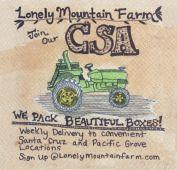
Yogi Tea
Available at local retailers and online yogiproducts.com
More than 100 exotic herbs and botanicals from around the world are used to create Yogi’s sweet and spicy herbal teas.
Annieglass

310 Harvest Drive, Watsonville 831.761.2041 x21 | annieglassstore.com
Locally designed and handmade slumped-glass plates, bowls and serving dishes that add famed art and style to the dining room.
Botanic and Luxe
701A Front St., Santa Cruz botanicandluxe.com
Botanic and Luxe is a lifestyle store in downtown Santa Cruz featuring home décor, gifts and botanicals.
Dark Horse Pottery

Cement Plant Road and 3rd, Davenport 831.425.5686 | darkhorsepottery.com
Rustic wood- and gas-fired fine pottery available for purchase in the artist’s Davenport showroom.
Last Chance Mercantile/MRWMD
14201 Del Monte Blvd., Marina 831.264.6900 | mrwmd.org
The only reuse store at the entrance to a landfill in the U.S. where one person’s trash truly becomes another’s treasure, Last Chance Mercantile provides convenient dropoff for reusable goods and an ever changing inventory of affordable, preowned and salvaged items.
Pacific Trading Co.
1224 Pacific Ave., Santa Cruz | 831.423.3349
504C Bay Ave., Capitola | 831.476.6109 facebook.com/pages/pacific-trading-co/65027935549
Independent, local, family-owned women’s apparel boutique.

Destination Salinas/Salinas Valley 411 Visitor Center, 222 Main St., Salinas 831.594.1799 | destinationsalinas.com
Destination Salinas offers everything about the area for visitors and locals alike: information, maps, souvenirs, T-shirts, local art and much more—plus we are a green business!
Albatross Ridge Tasting Room
Mission Street between Ocean & 7th Avenues, Carmelby-the-Sea | 831.402.8992 | albatrossridge.com
Pinot noir and chardonnay wines that express their place of origin just seven miles from the Carmel Coast and made from organically grown grapes.
Beauregard Vineyards 10 Pine Flat Road, Santa Cruz 831.425.7777 | beauregardvineyards.com
Sustainably produced wines expressing the terroir of the Santa Cruz Mountains through minimal impact winemaking.
Calera Wine Co. 11300 Cienega Road, Hollister 831.637.9170 | calerawine.com
Award-winning producer of Burgundy-style Pinot Noirs offering a tasting room, stunning views and a picnic area at its winery and caves.
Carmel Valley Wine Experience cvwineexperience.com
A group of tasting rooms offering a unique way to experience wines in the Carmel Valley sunshine.
Members include:
Bernardus Winery
5 W. Carmel Valley Road, Carmel Valley 831.298.8021 | bernardus.com
Bunter Spring Winery
9 DelFino Place, Ste. 102, Carmel Valley 202.744.1343 | bunterspringwinery.com
Chesebro Wines
19 E. Carmel Valley Road, Carmel Valley 831.659.2125 | chesebrowines.com
Cima Collina
19 E. Carmel Valley Road, Carmel Valley 831.620.0645 | cimacollina.com
The Coastview Vineyard
19 E. Carmel Valley Road, Carmel Valley 831.298.7521 | coastviewvineyard.com
Holman Ranch
19 E. Carmel Valley Road, Carmel Valley 831.659.2640 | holmanranch.com
Idle Hour Winery
9 DelFino Place, Carmel Valley 831.298.7526 | idlehourwinery.com
Jarman Tasting Room
18 W. Carmel Valley Road, Carmel Valley
831.298.7300 | jarmanwine.com

Joullian Vineyards
2 Village Drive, Carmel Valley 831.659.8100 | joullian.com
Joyce Vineyards
19 E. Carmel Valley Road, Carmel Valley 831.659.2885 | joycevineyards.com
Mercy Wines
40 W. Carmel Valley Road, Ste. A, Carmel Valley 831.659.4321 | mercywines.com

Parsonage Family Winery
19 E. Carmel Valley Road, Carmel Valley 831.659.7322 | parsonagewine.com
Cima Collina Tasting Room
19 E. Carmel Valley Road, Carmel Valley 831.620.0645 | cimacollina.com
Award-winning, artisanal wines from small Monterey vineyards. Tasting room is located in a picturesque historic building.
Hallcrest Vineyards
379 Felton Empire Road, Felton 831.335.4441 | hallcrestvineyards.com
A family-owned business that takes pride in producing original, organic wines and hard ciders with a taste of the Santa Cruz Mountains.
Holman Ranch Vineyards Tasting Room
19 E. Carmel Valley Road, Carmel Valley 831.659.2640 | holmanranch.com
Featuring diverse wines with complex flavors reflective of the Carmel Valley terroir and frequent special events.
Jarman Tasting Room
18 W. Carmel Valley Road, Carmel Valley 831.298.7300 | jarmanwine.com
Holman Ranch’s Jarman Wine is a new premium chardonnay and pinot noir label. $1 from each bottle sold benefits the Alzheimer’s Drug Discovery Foundation.
Percheron-McFarland 46 4th St., Gonzales 831.675.2311 | percheron-mcfarland.com
Dedicated to a world-famous legacy of excellence in California Pinot Noir and Chardonnay.
Scheid Vineyards Tasting Room San Carlos at 7th, Carmel-by-the-Sea 831.626.WINE | scheidvineyards.com
Scheid Vineyards Winery & Tasting Room 1972 Hobson Ave., Greenfield 831.386.0316 | scheidvineyards.com
Forty years of success in family winemaking in Salinas Valley.
Storrs Winery 303 Potrero St., Ste. 35, Santa Cruz 831.458.5030 | storrswine.com
Handcrafted wines made in the Santa Cruz Mountains; downtown Santa Cruz tasting room open daily.
Windy Oaks Estate
550 Hazel Dell Road, Corralitos 831.786.9463 | windyoaksestate.com
New: Su Vecino Court, Dolores between 5th and 6th, Carmel-by-the-Sea 831.786.9463 | windyoaksestate.com
Unique and fine wines reflecting the terroirs of Monterey and Santa Cruz counties.
